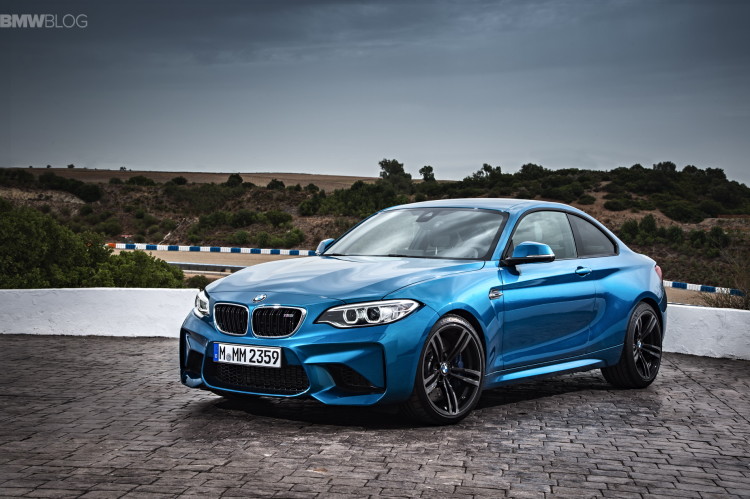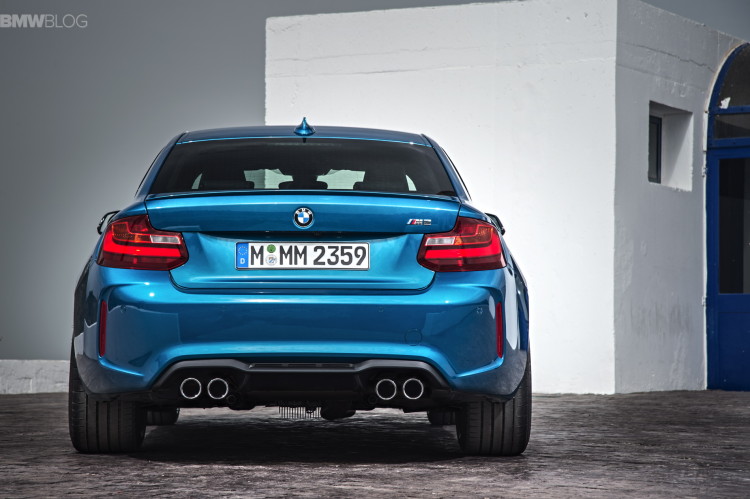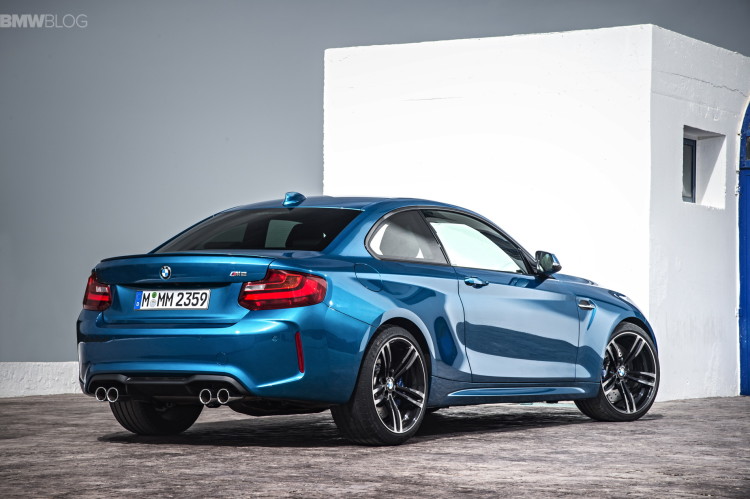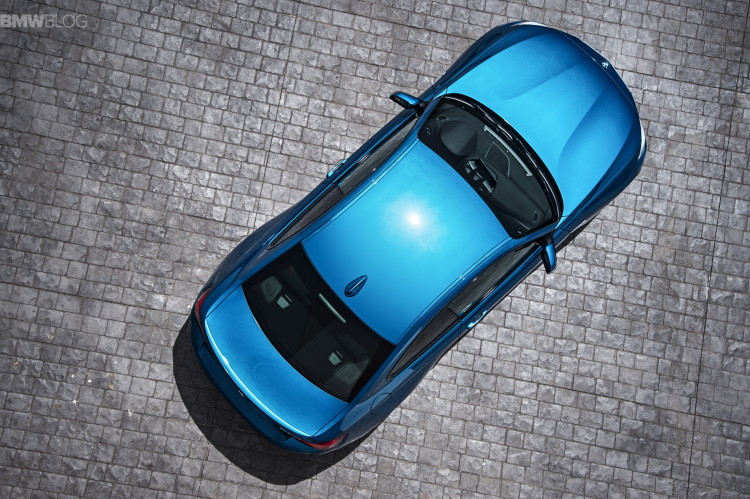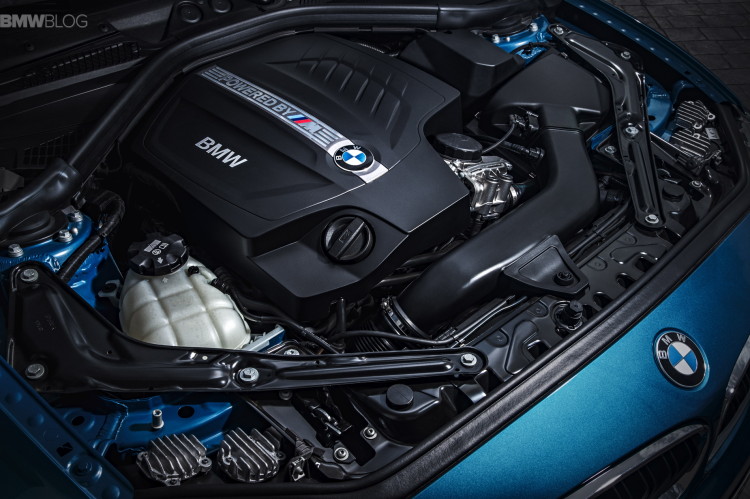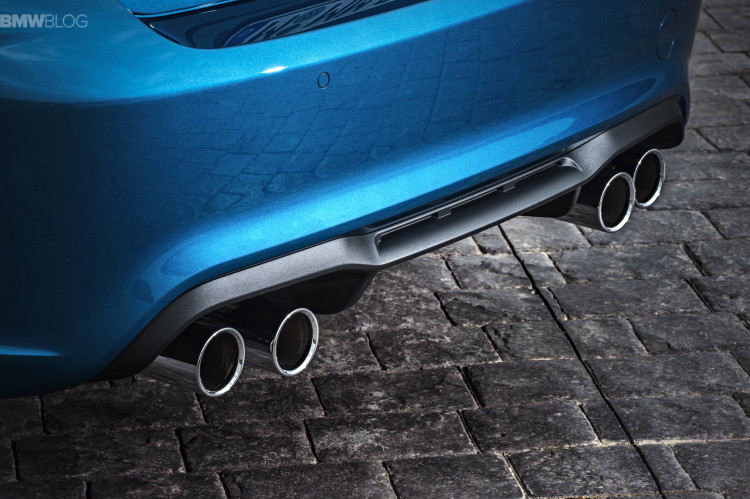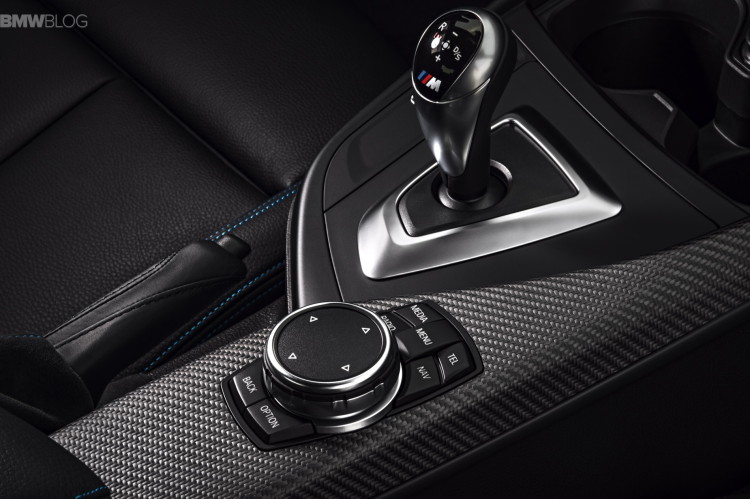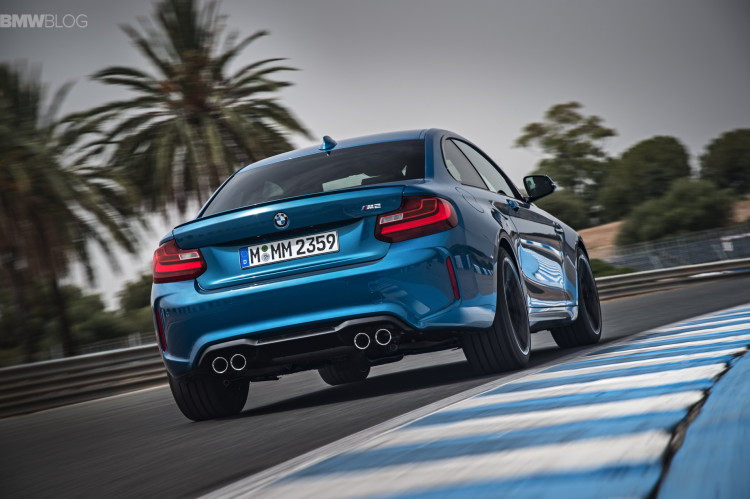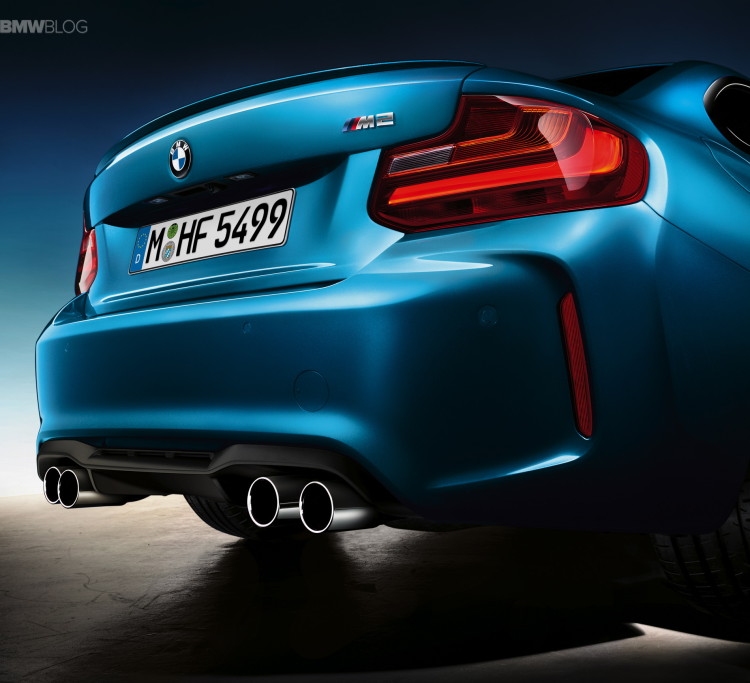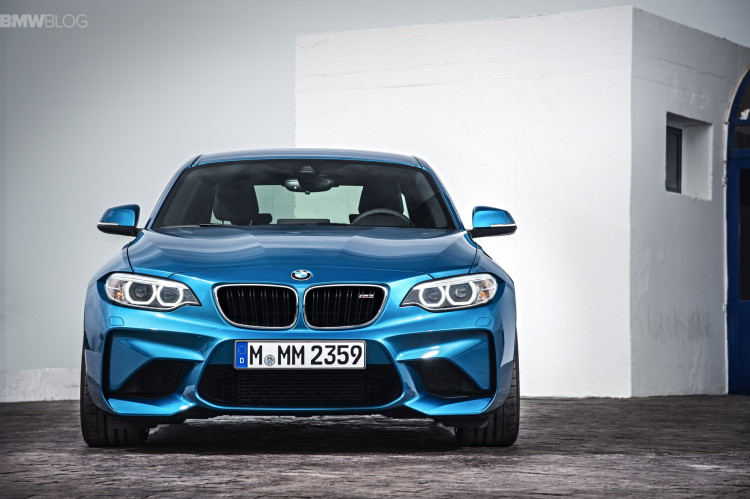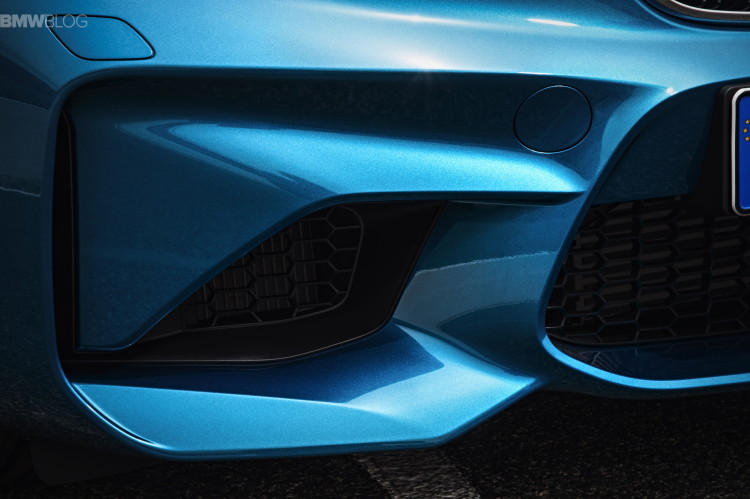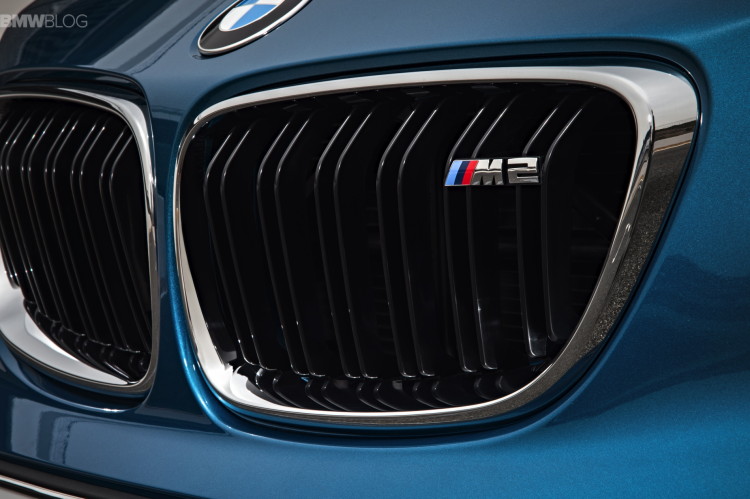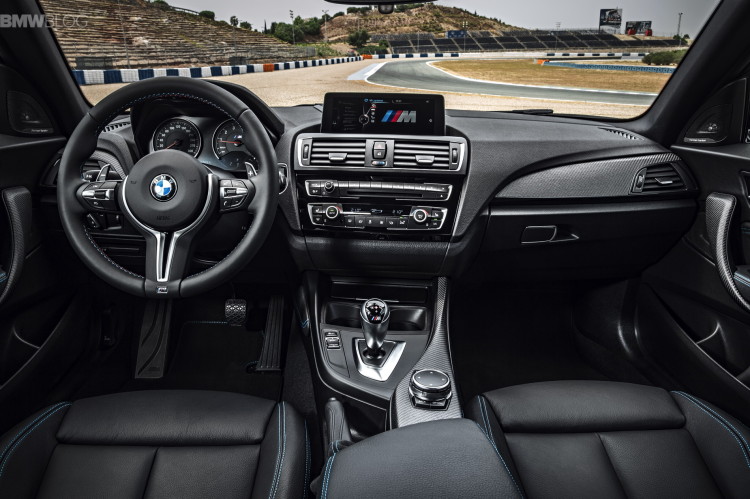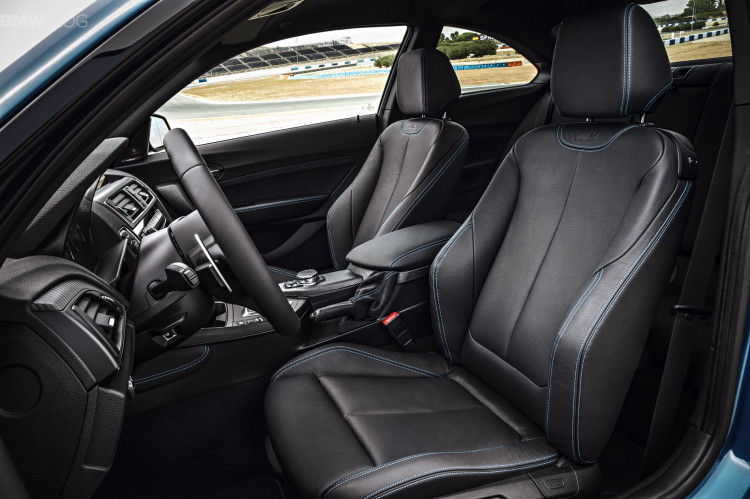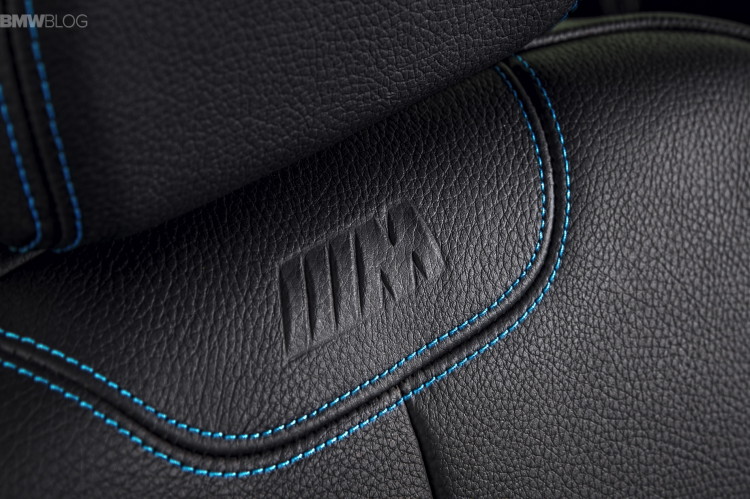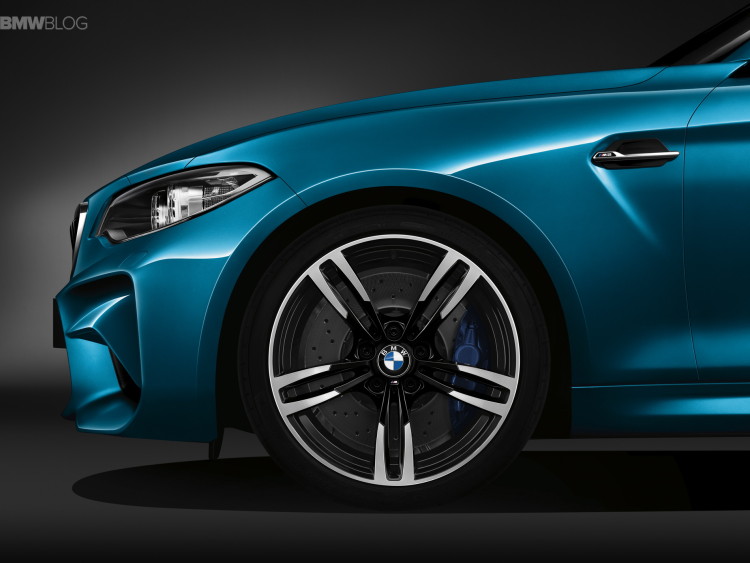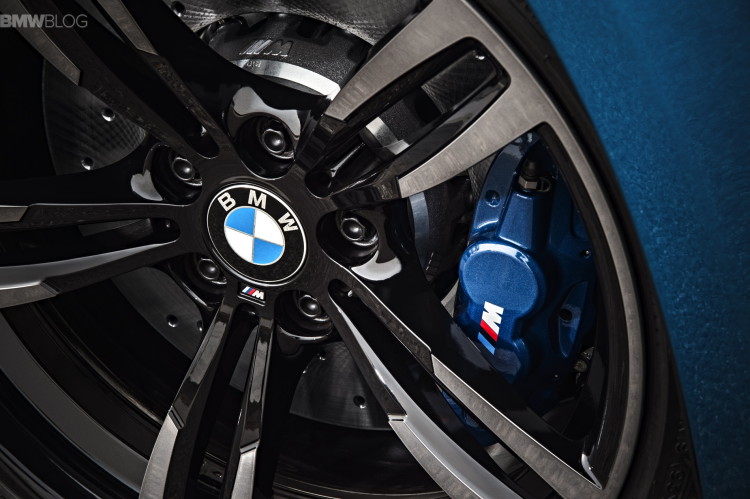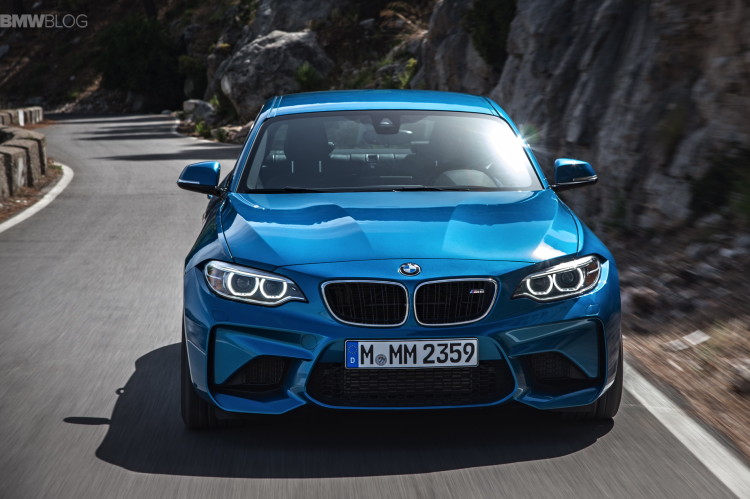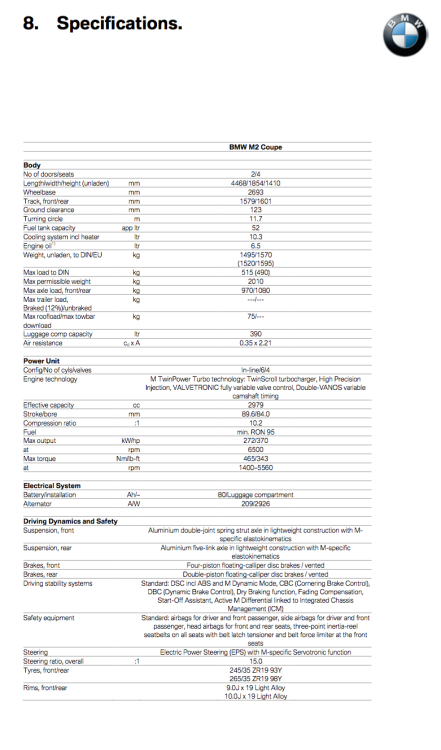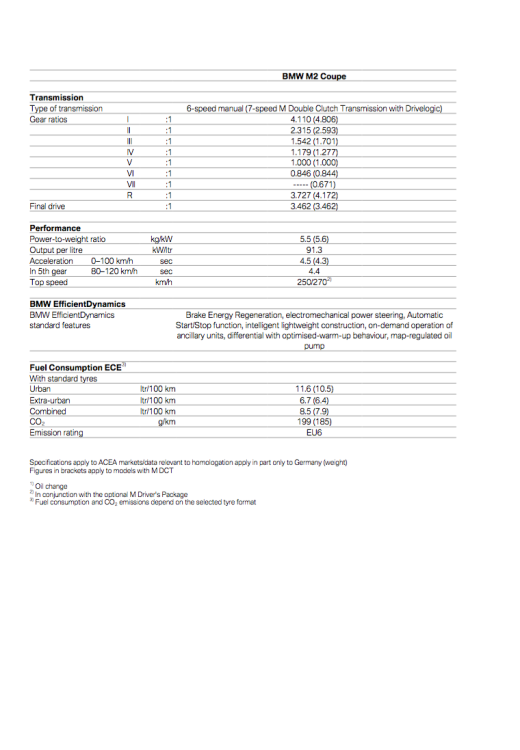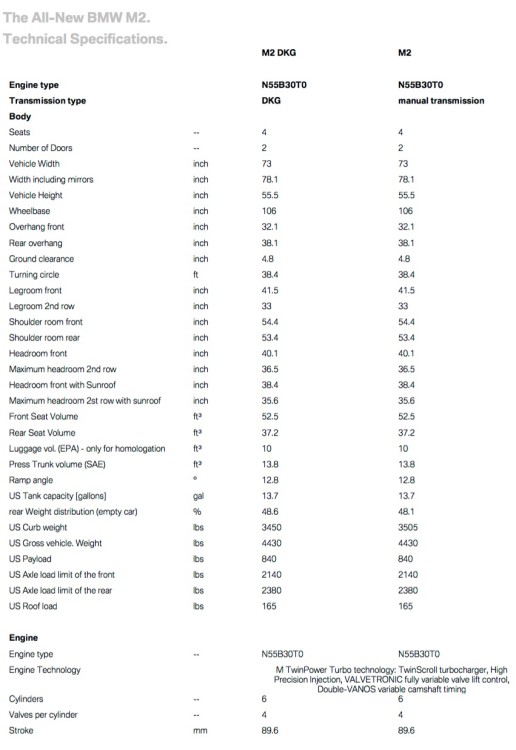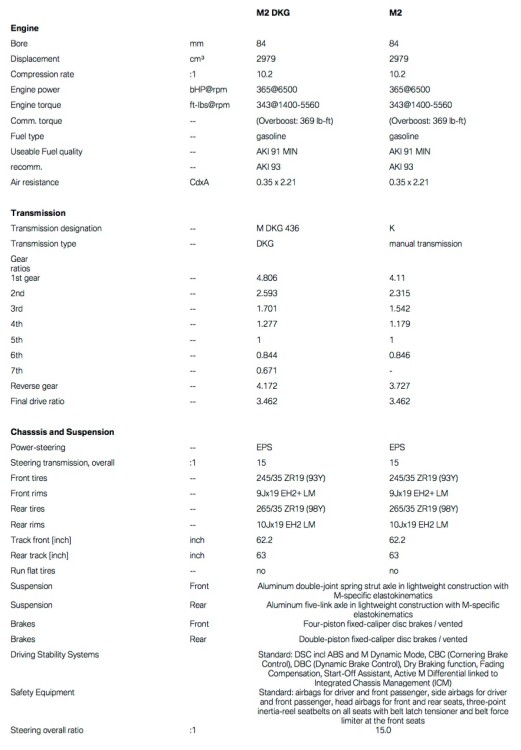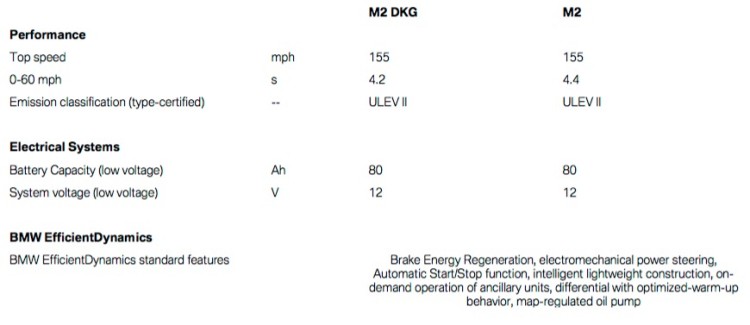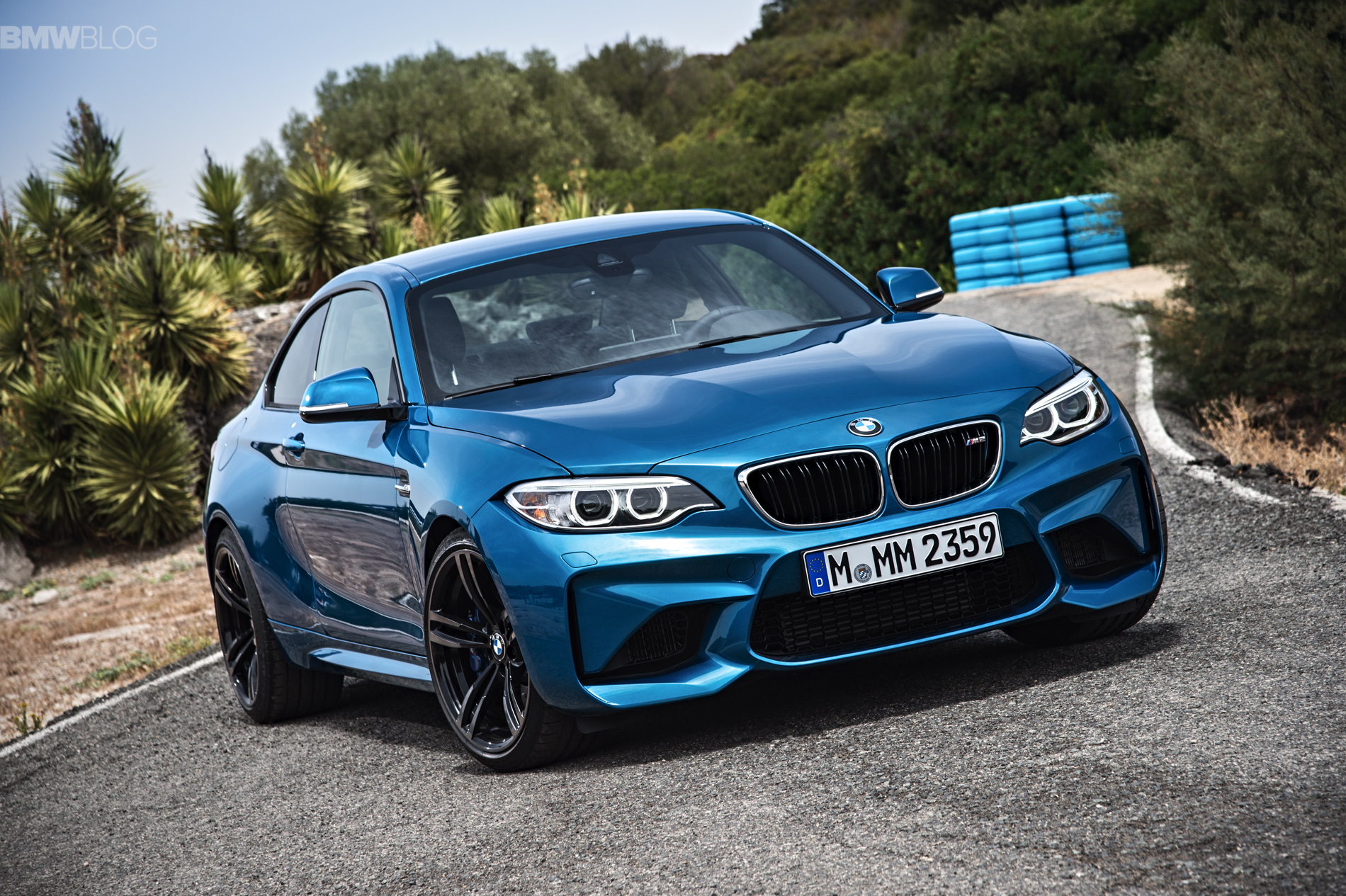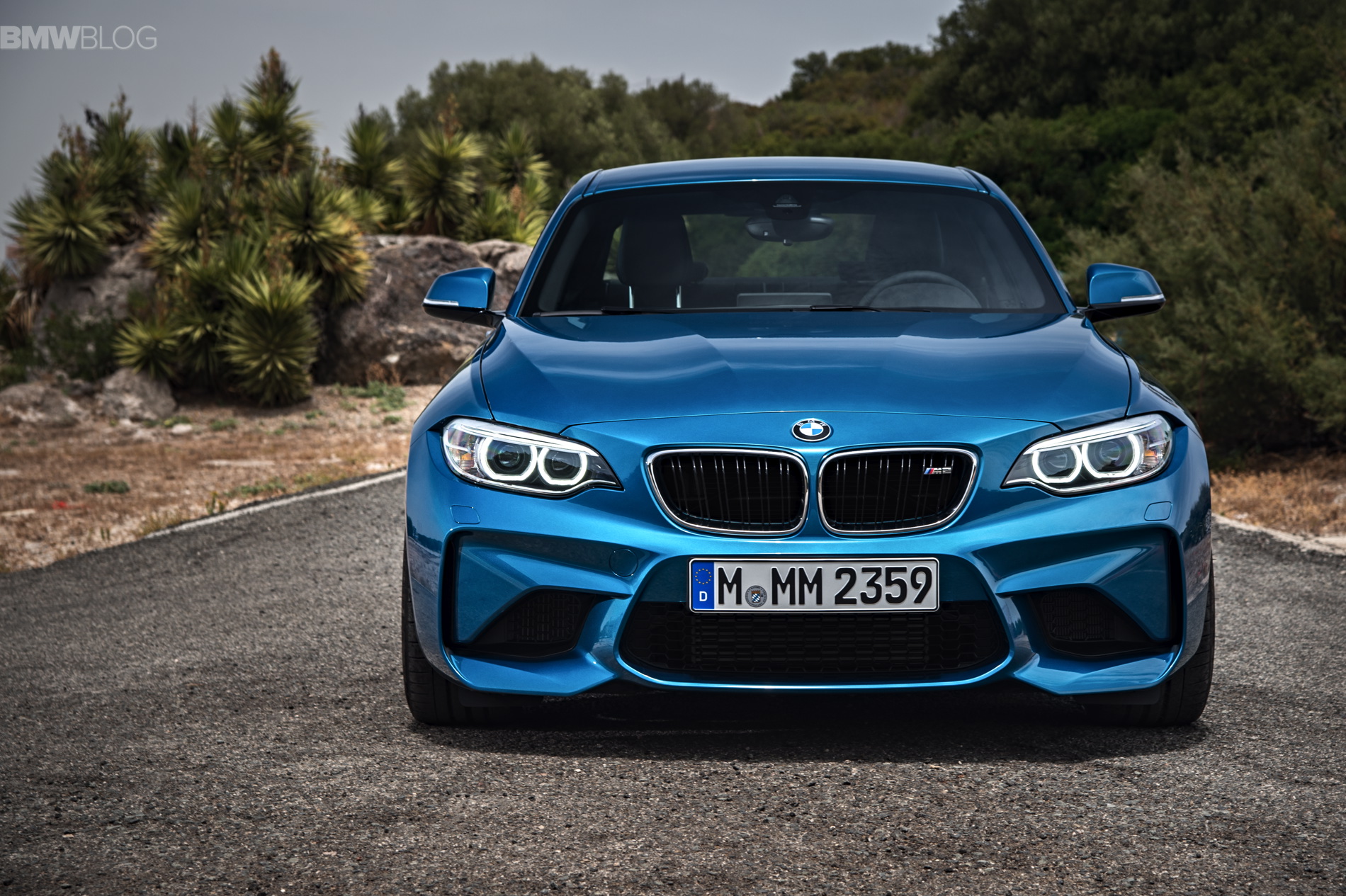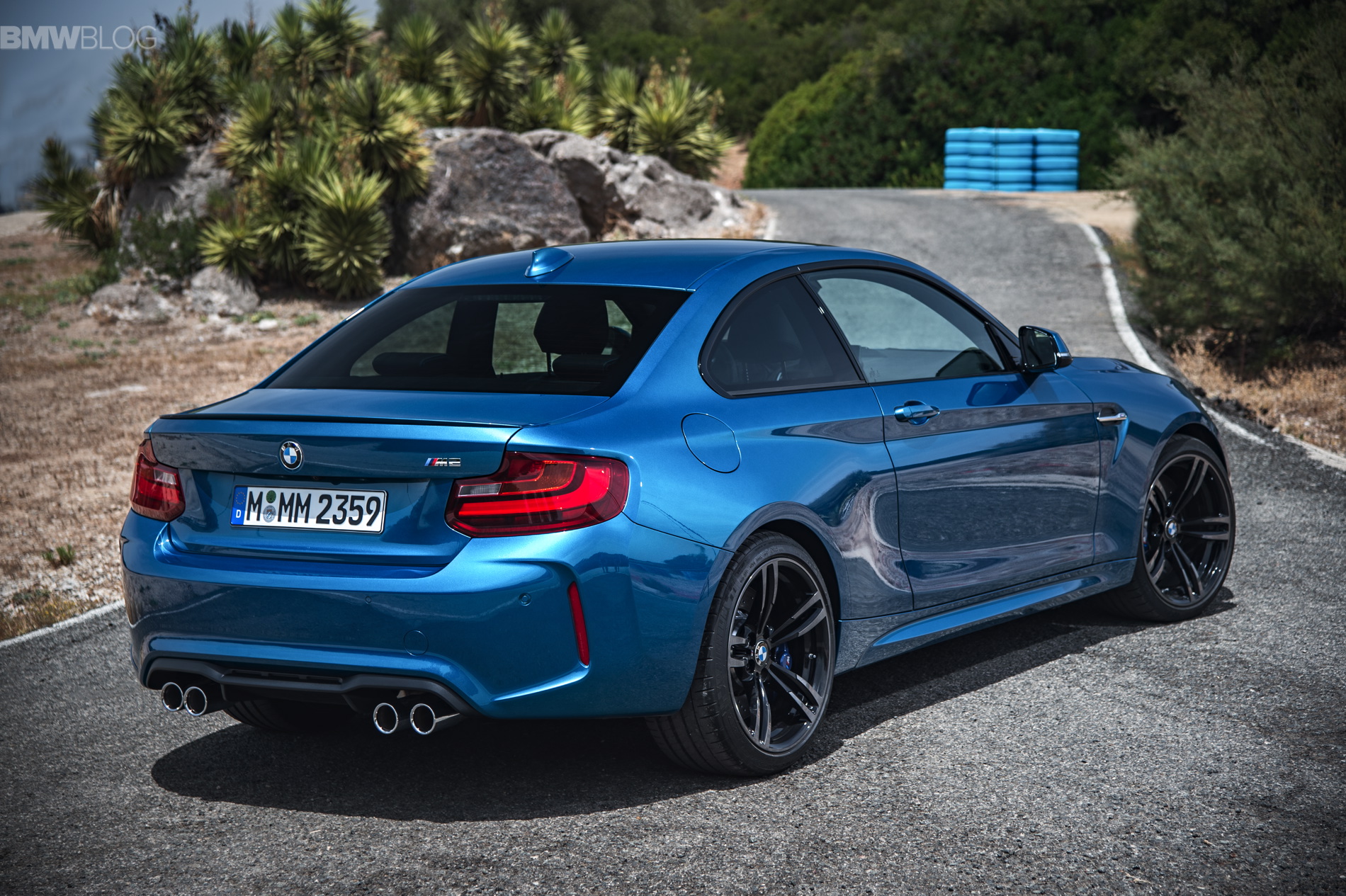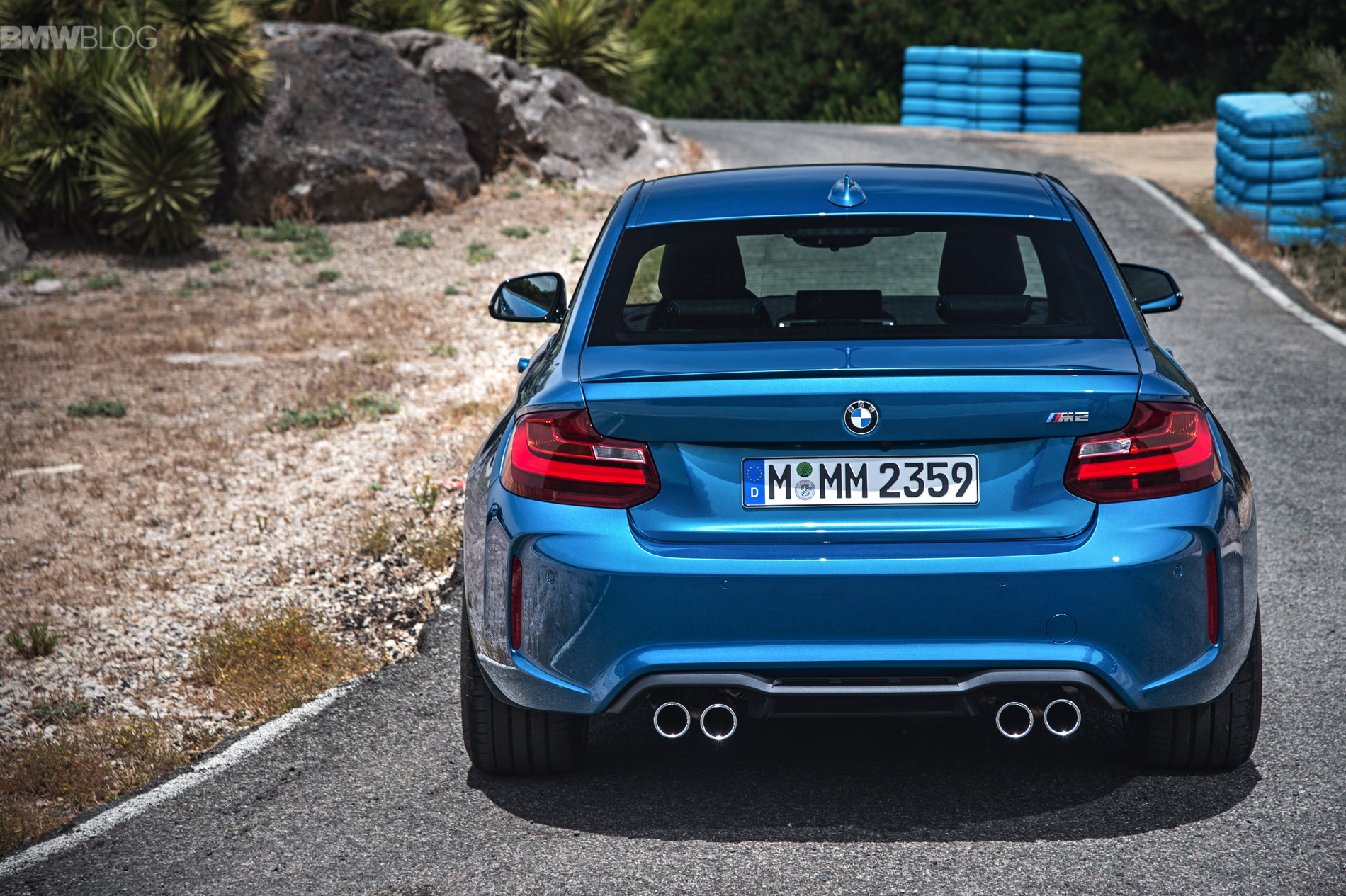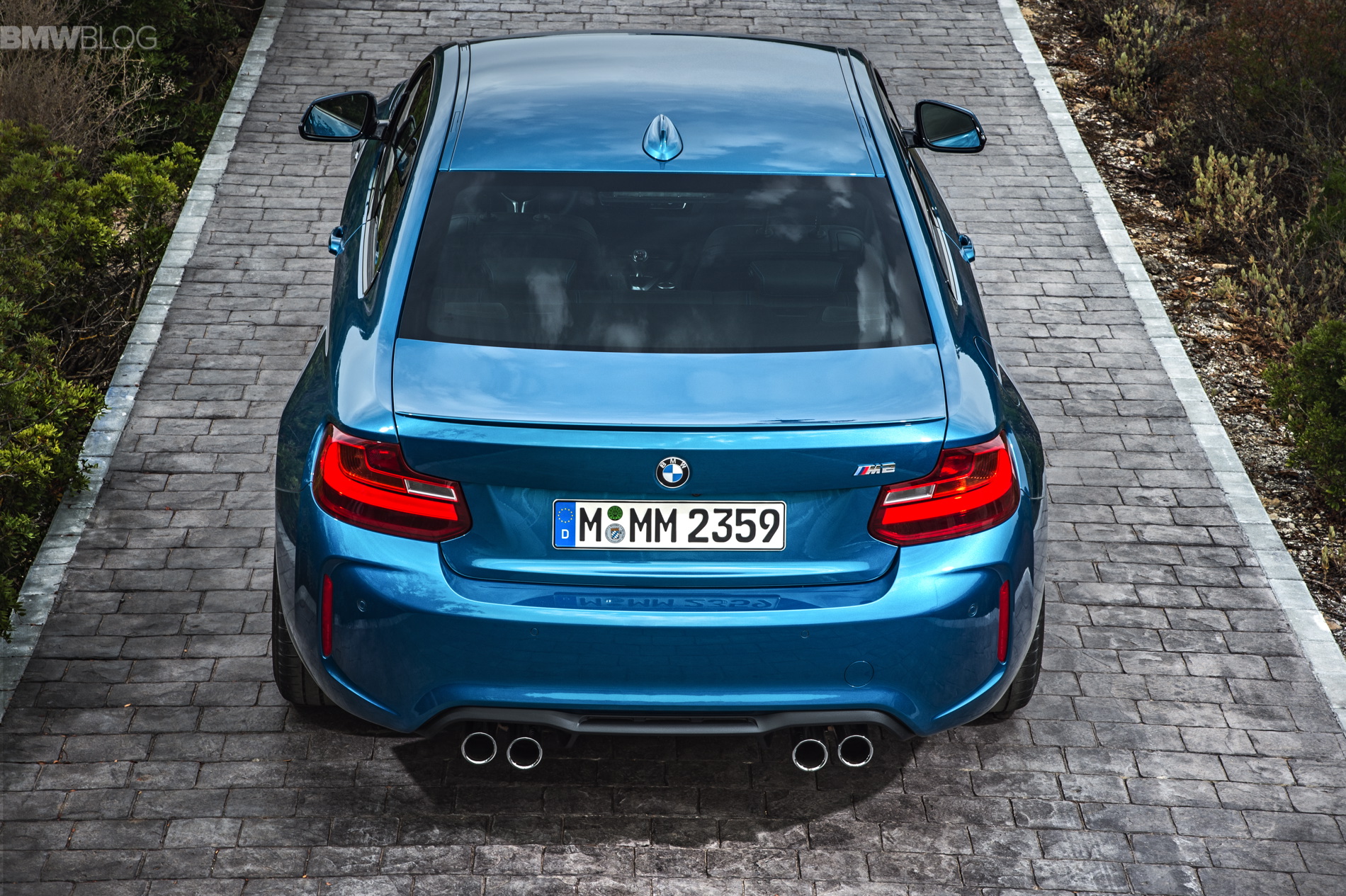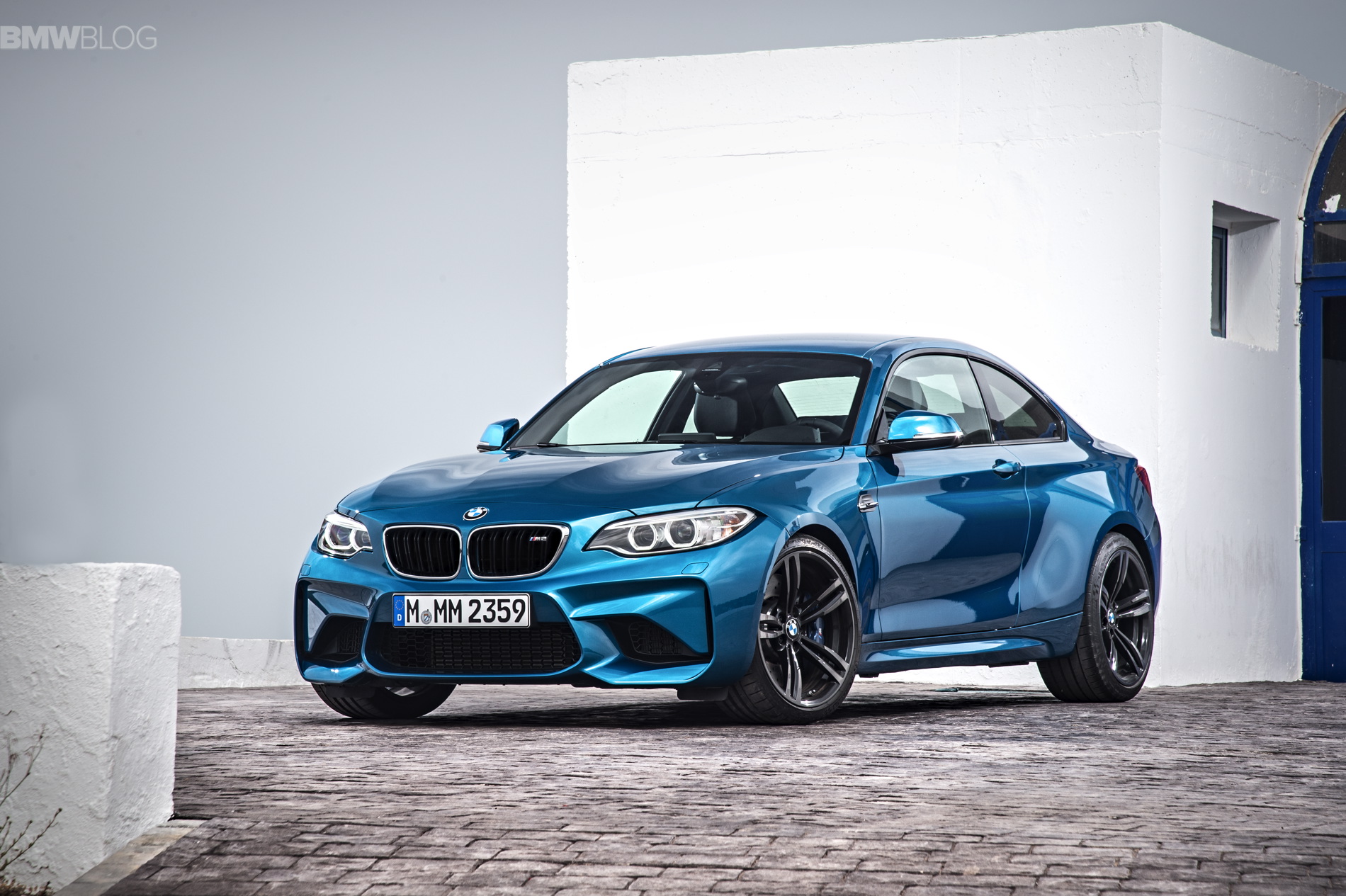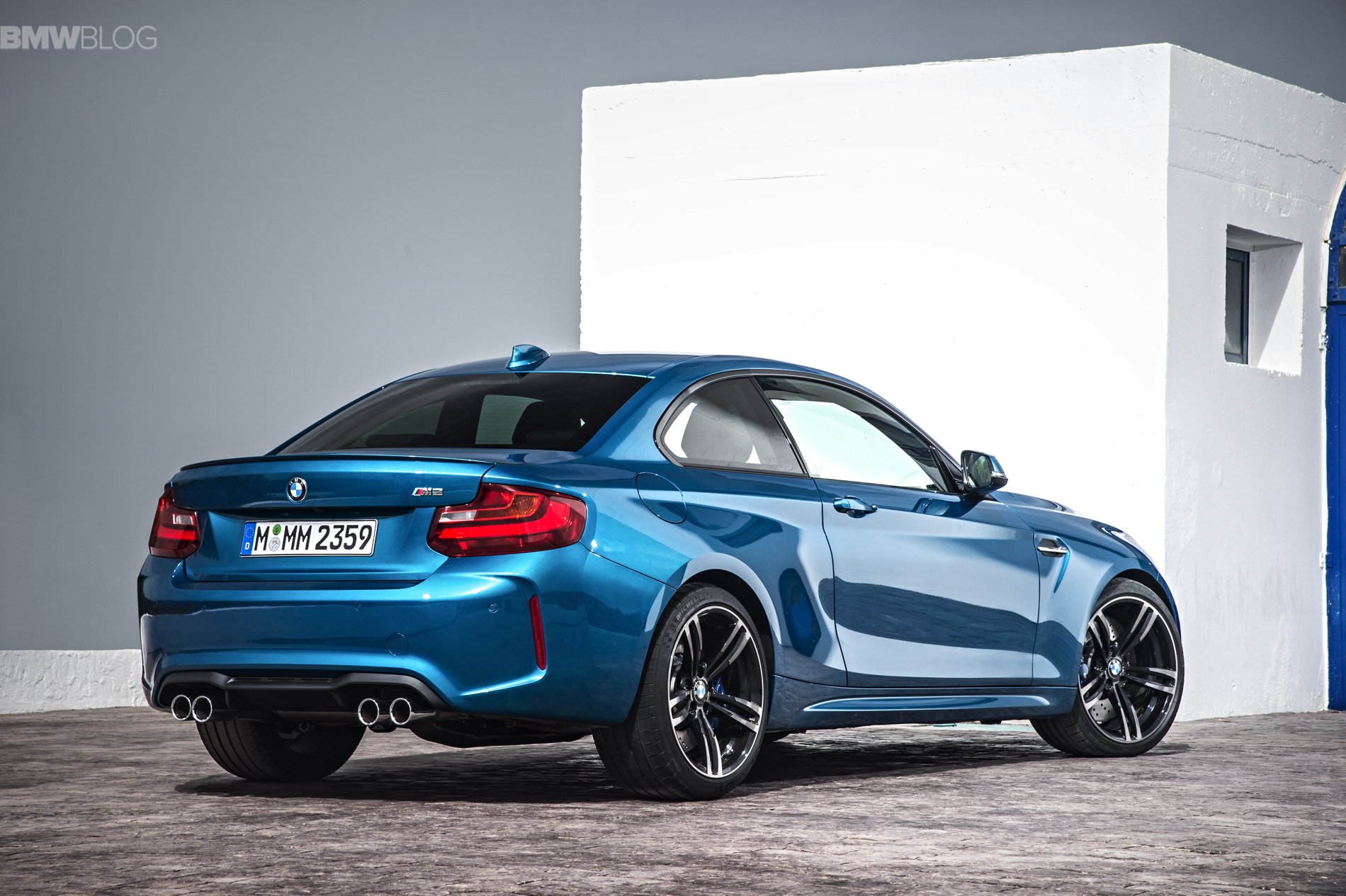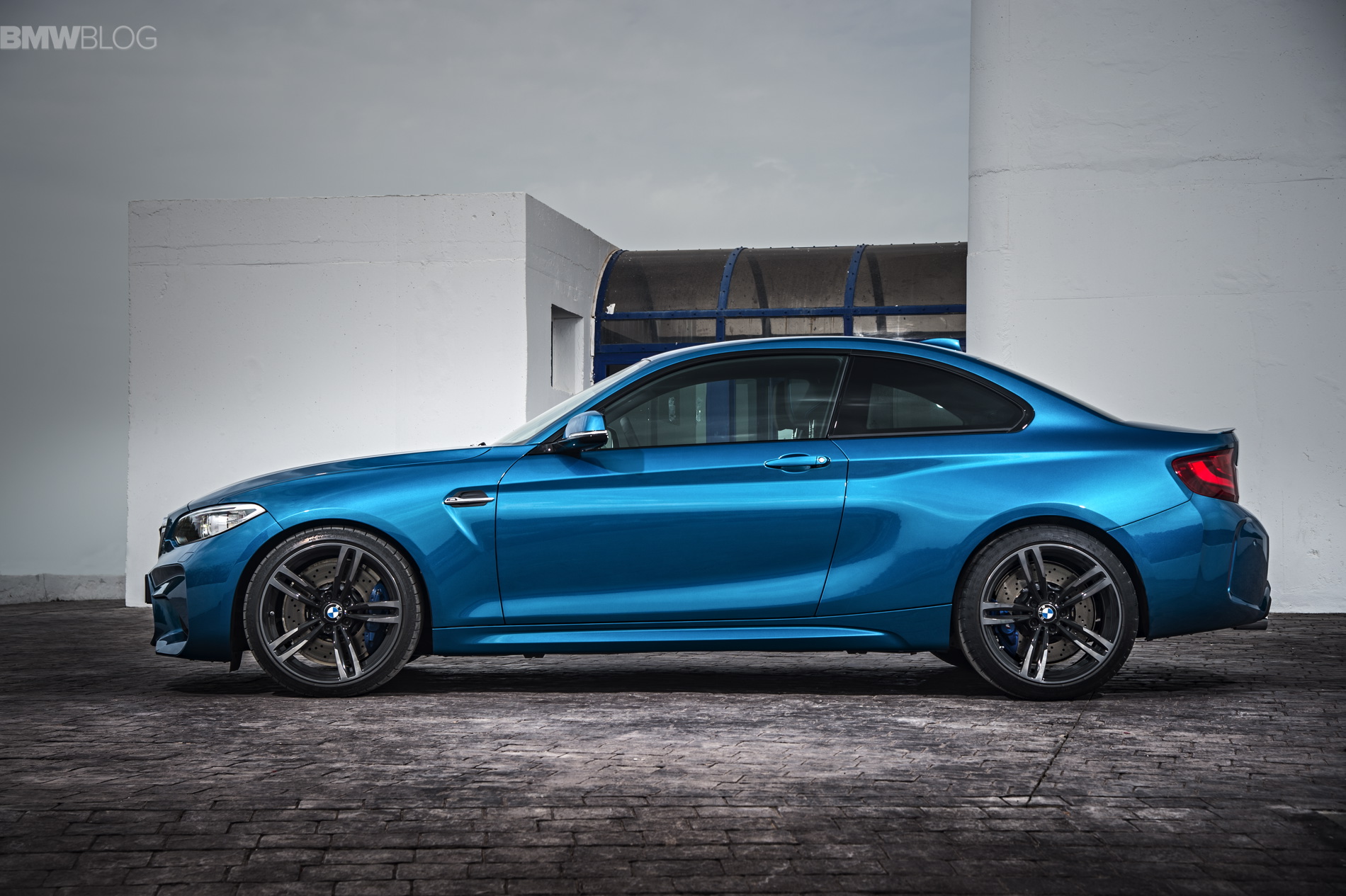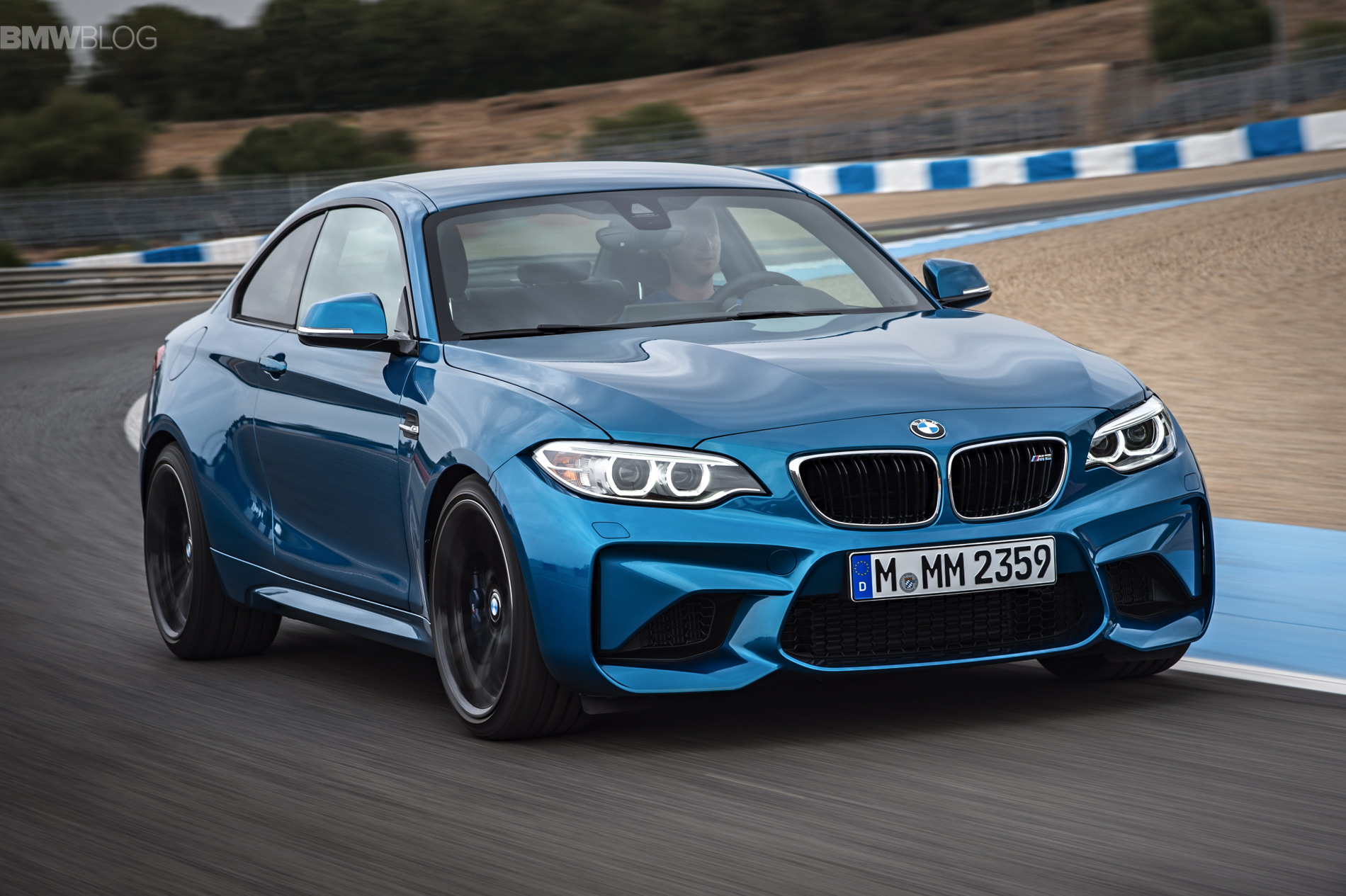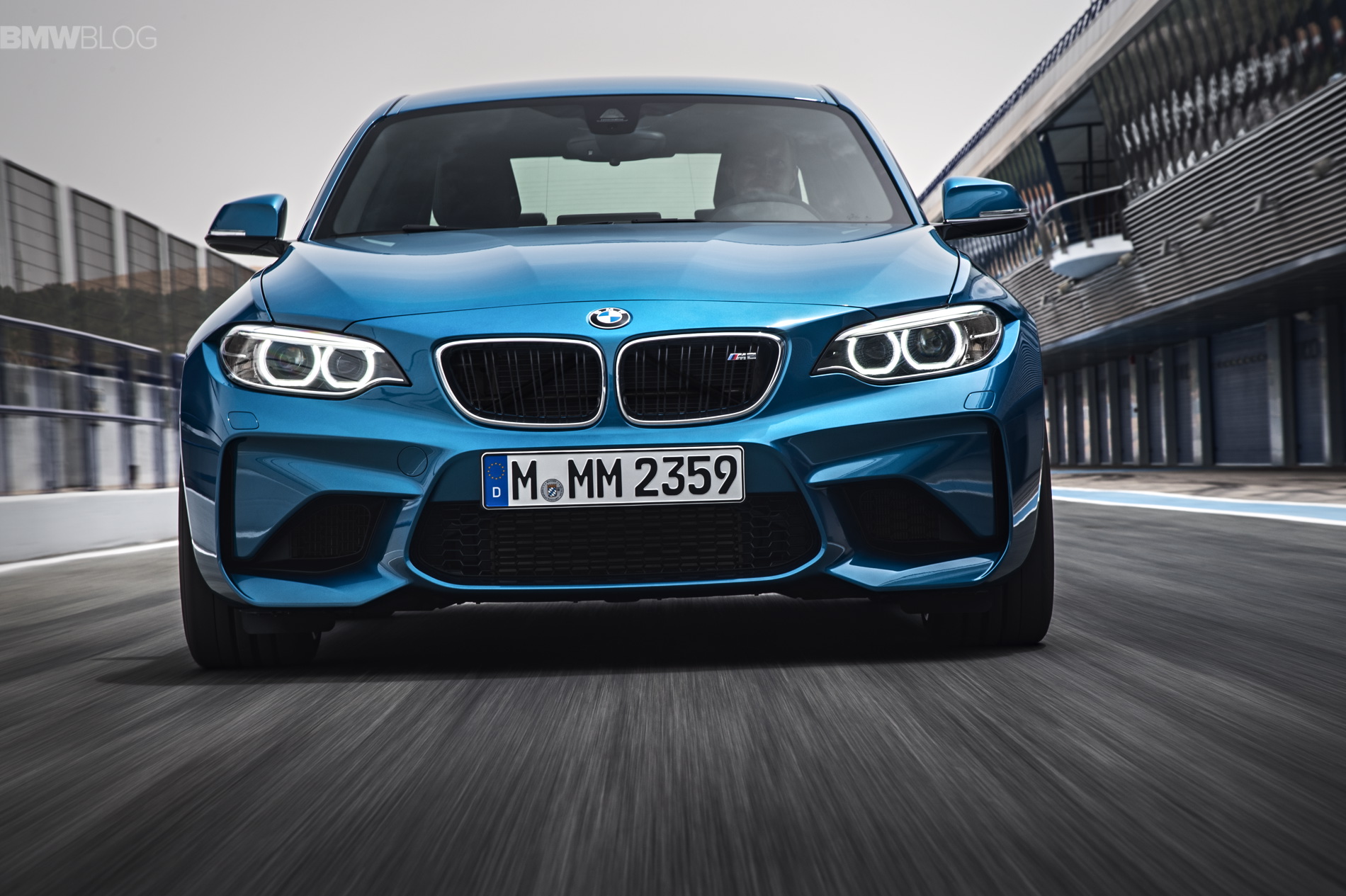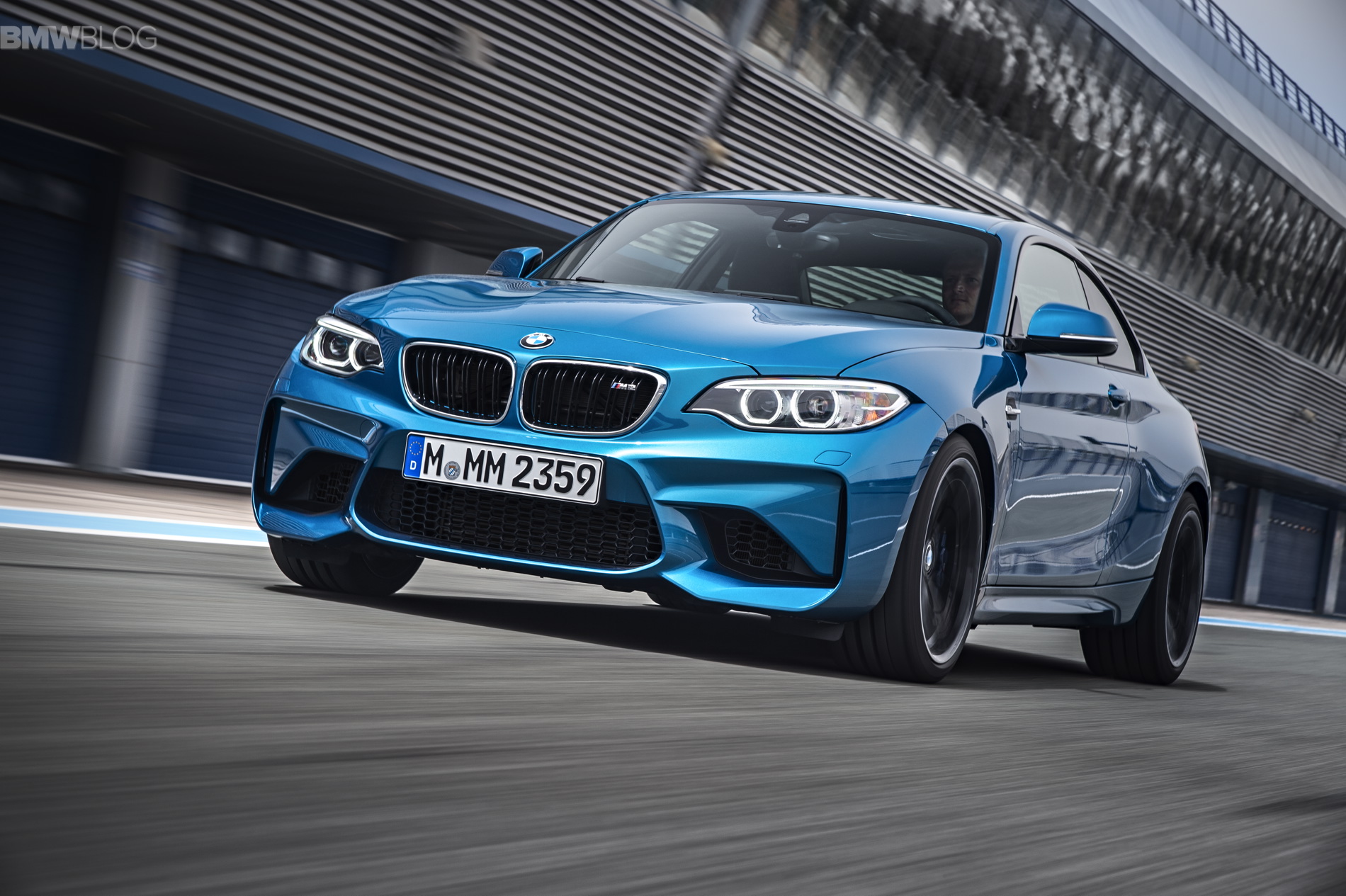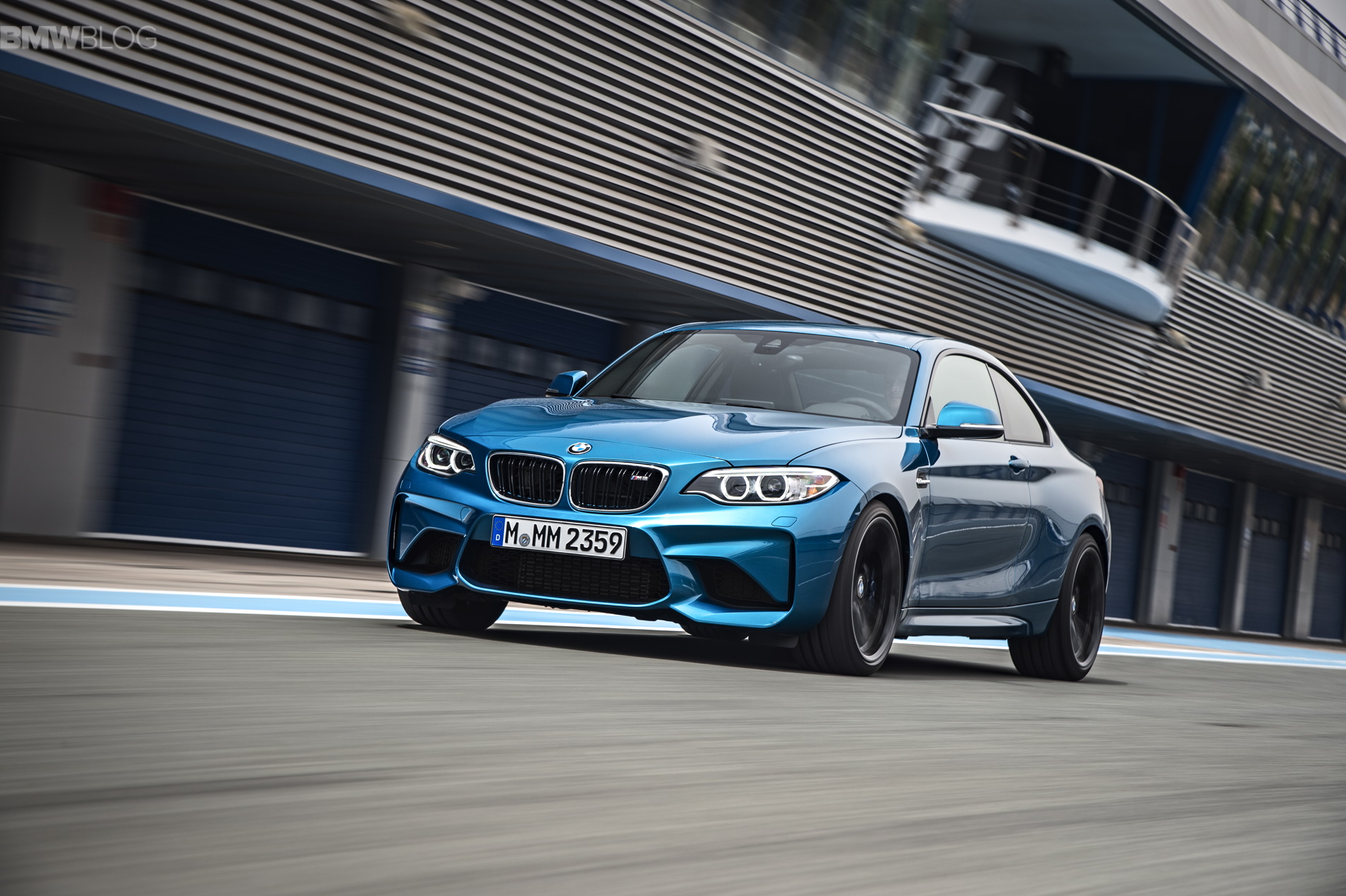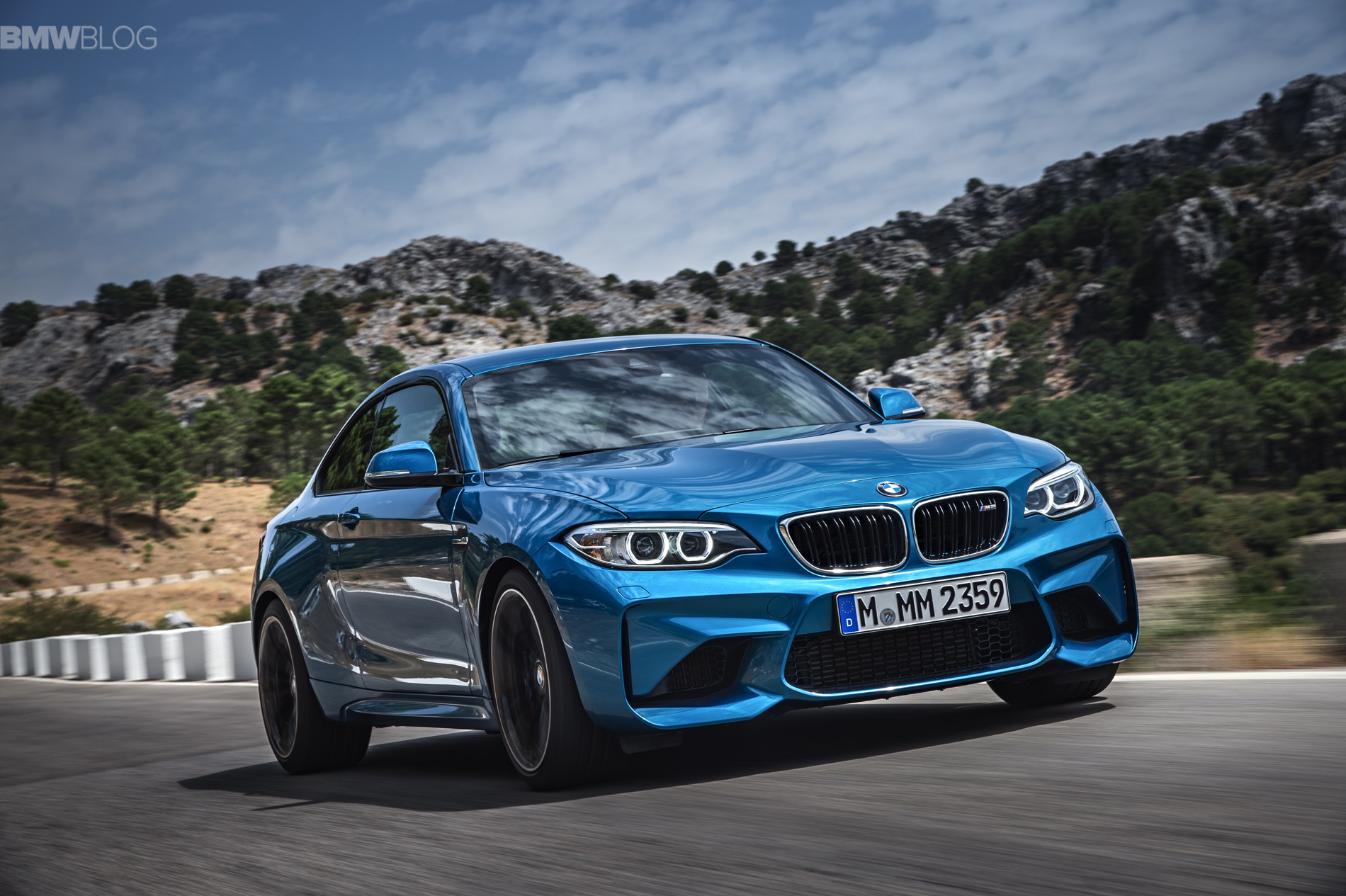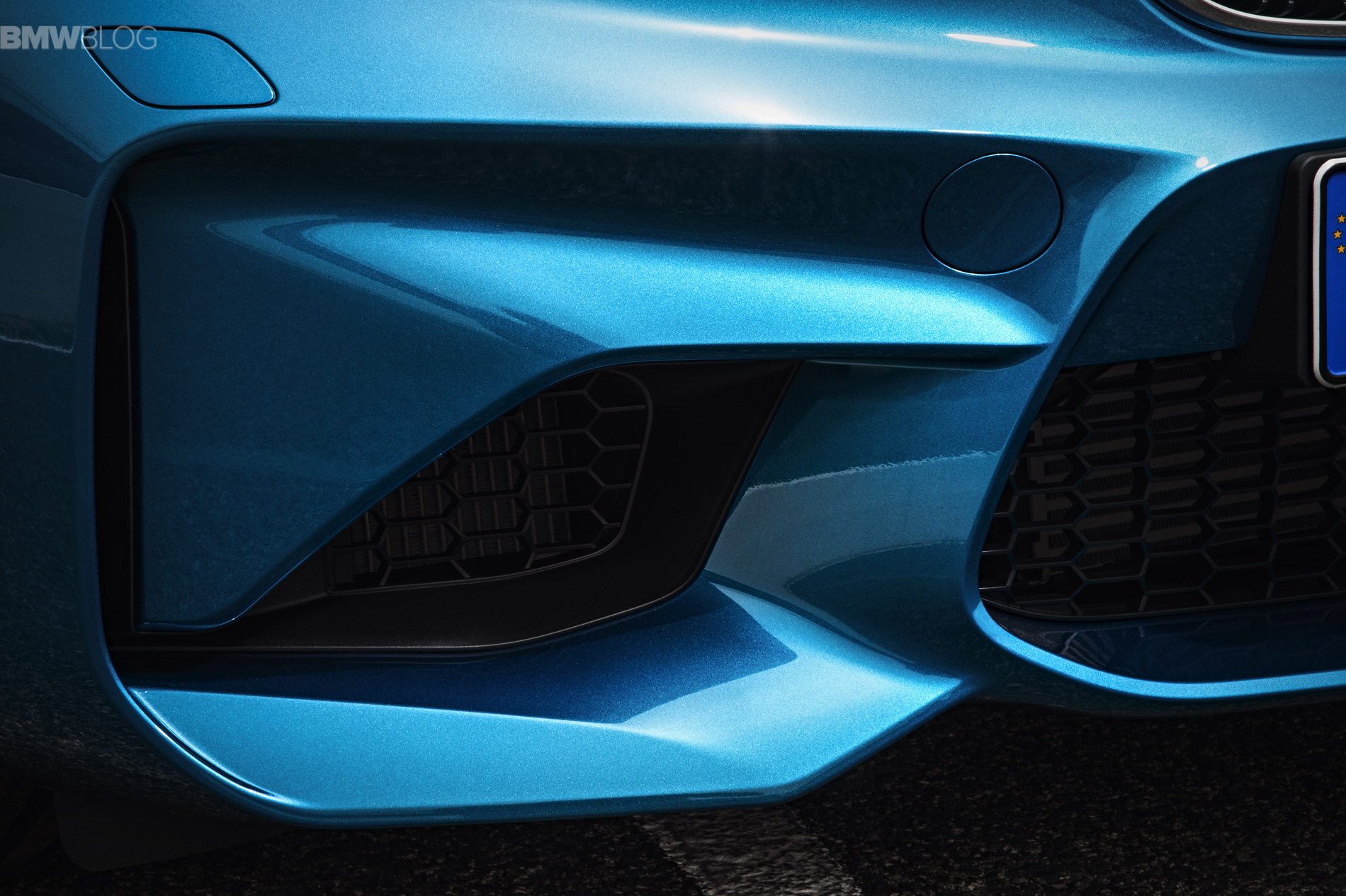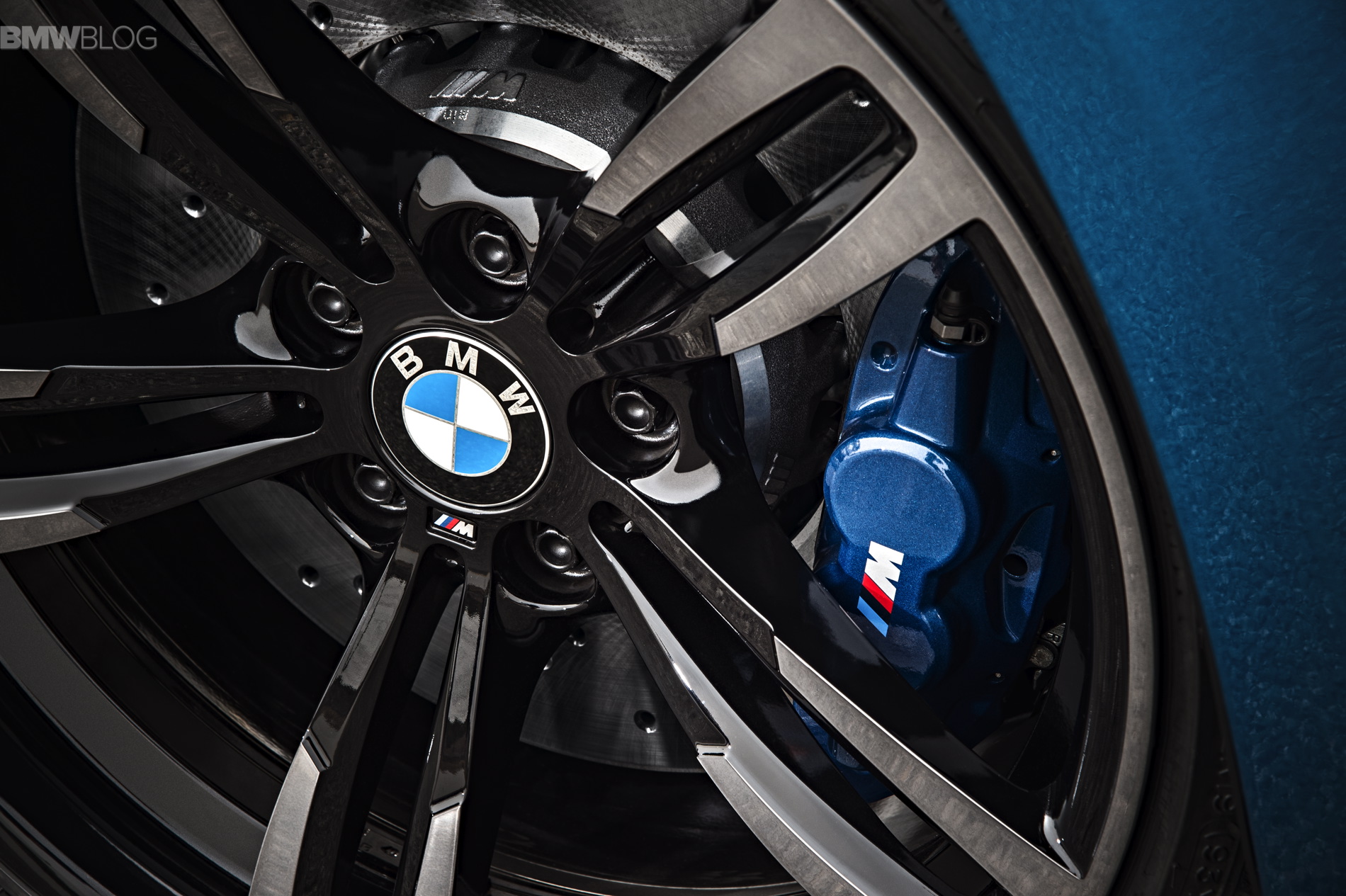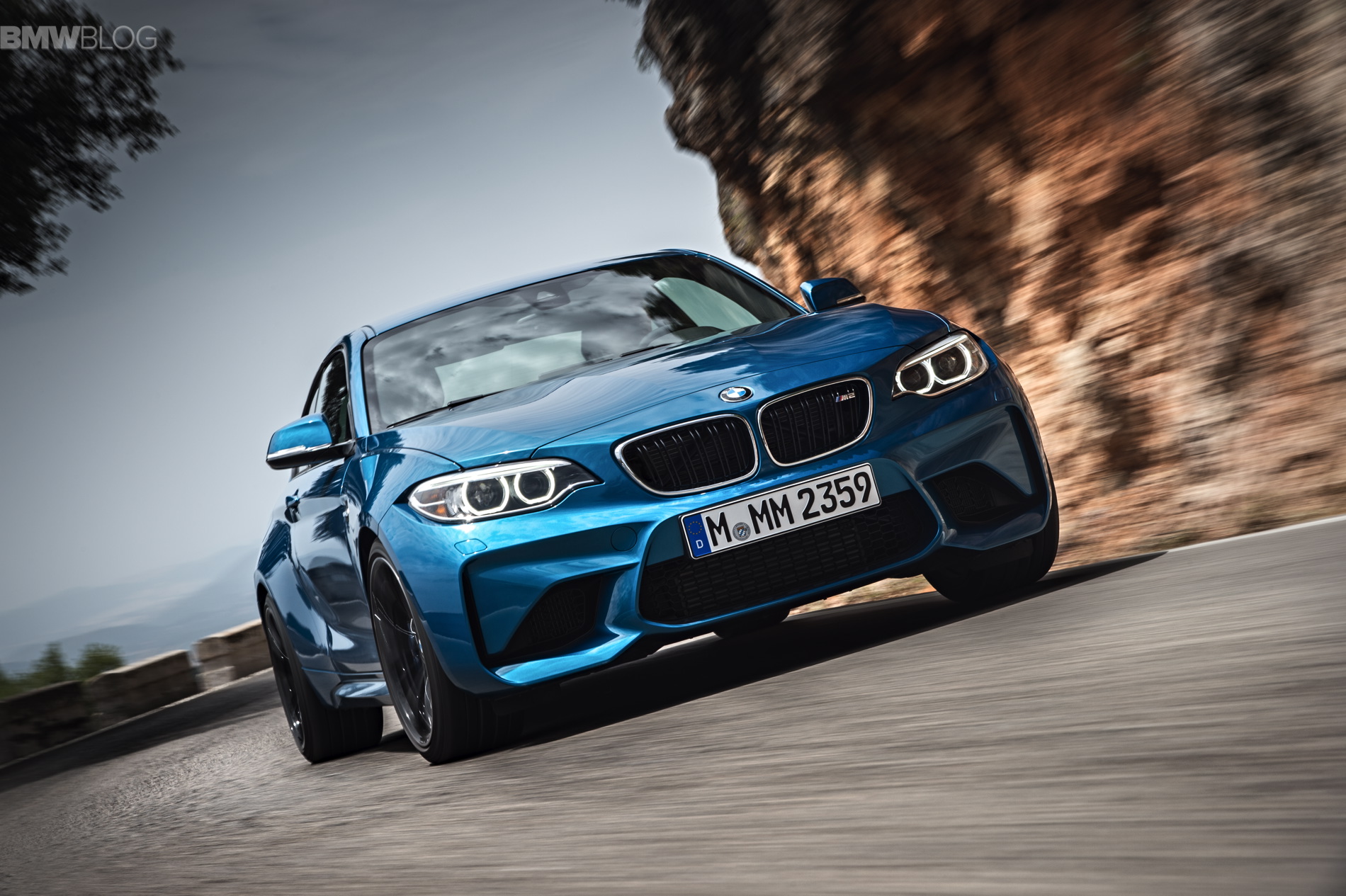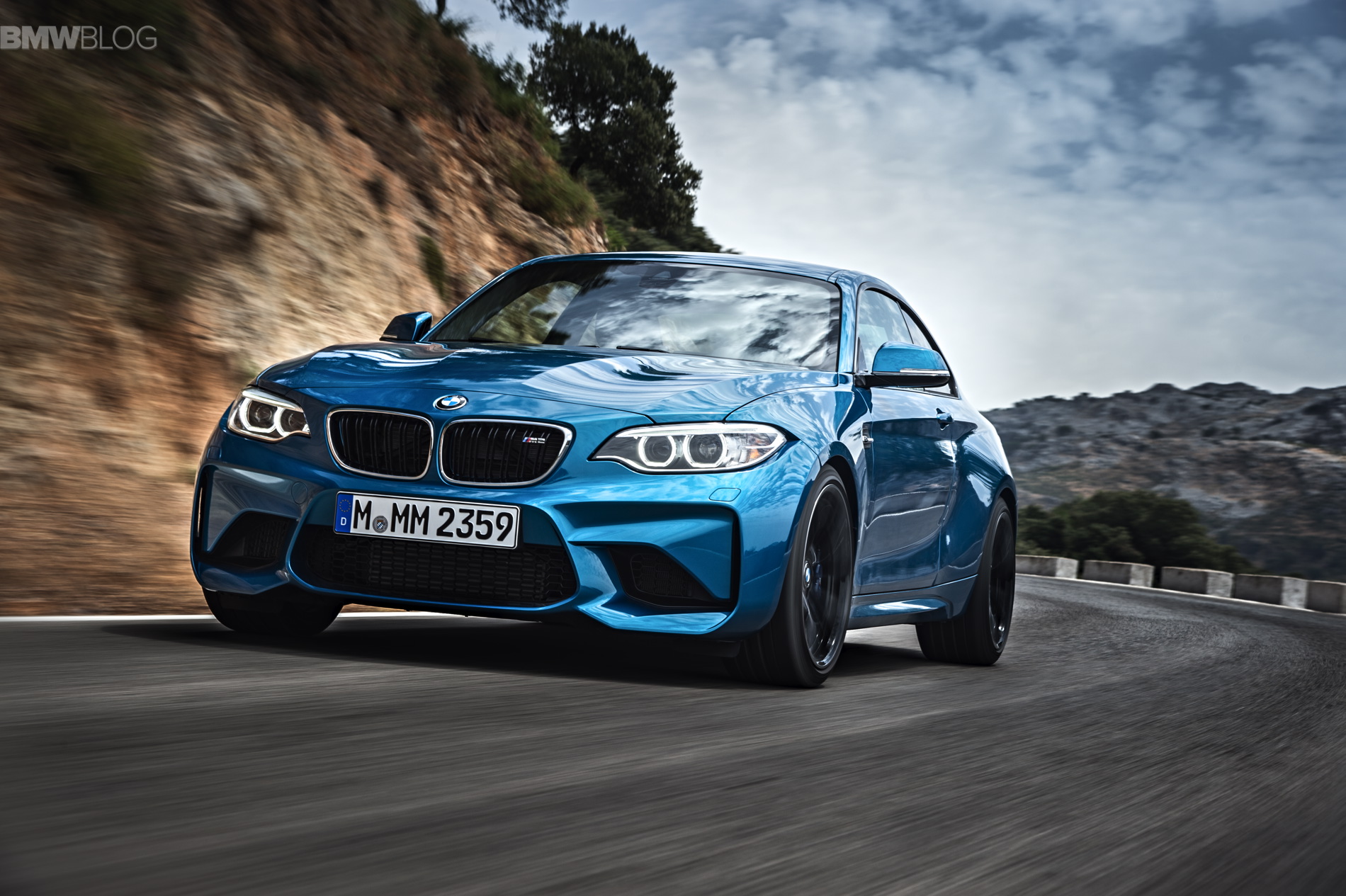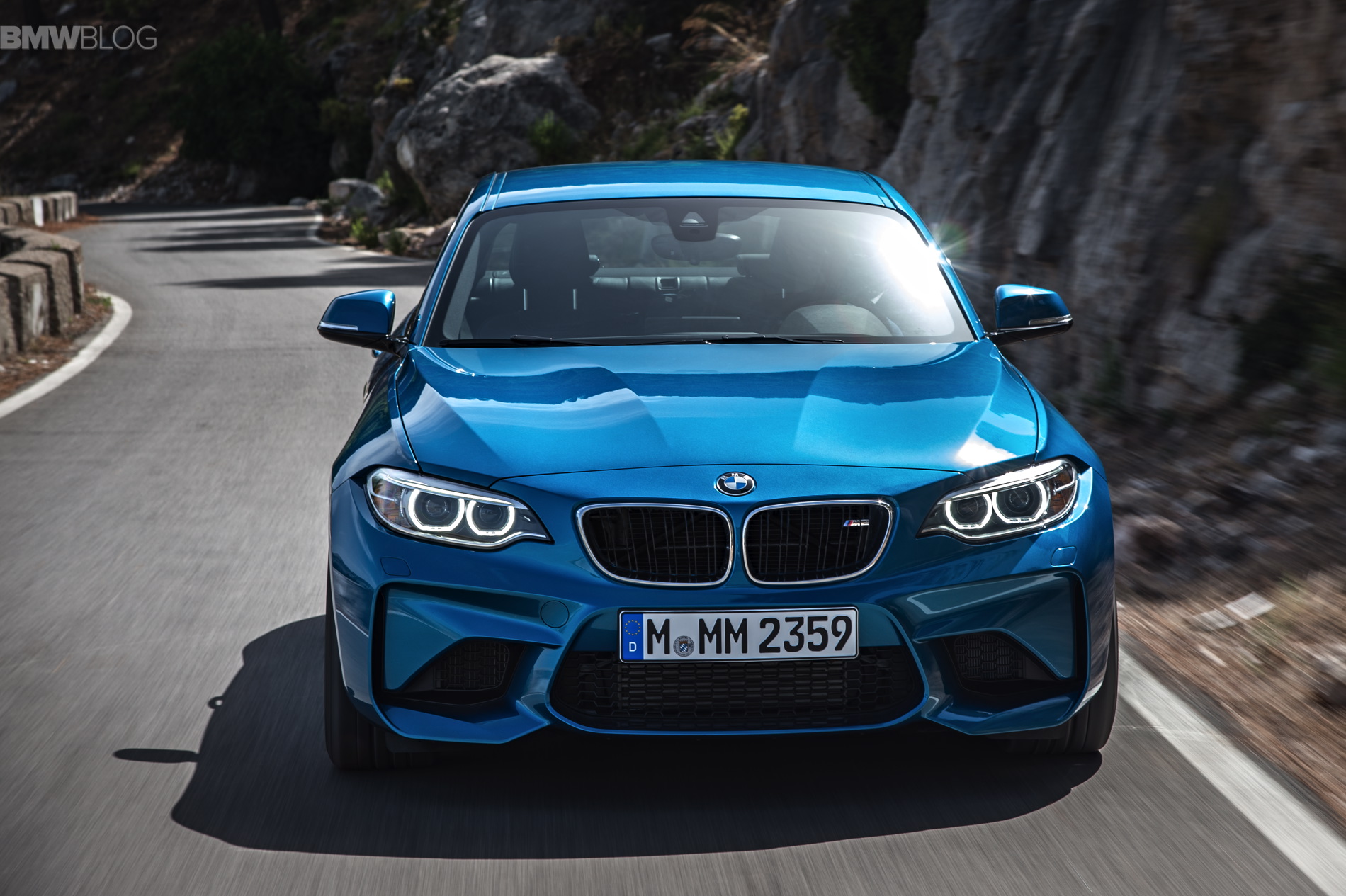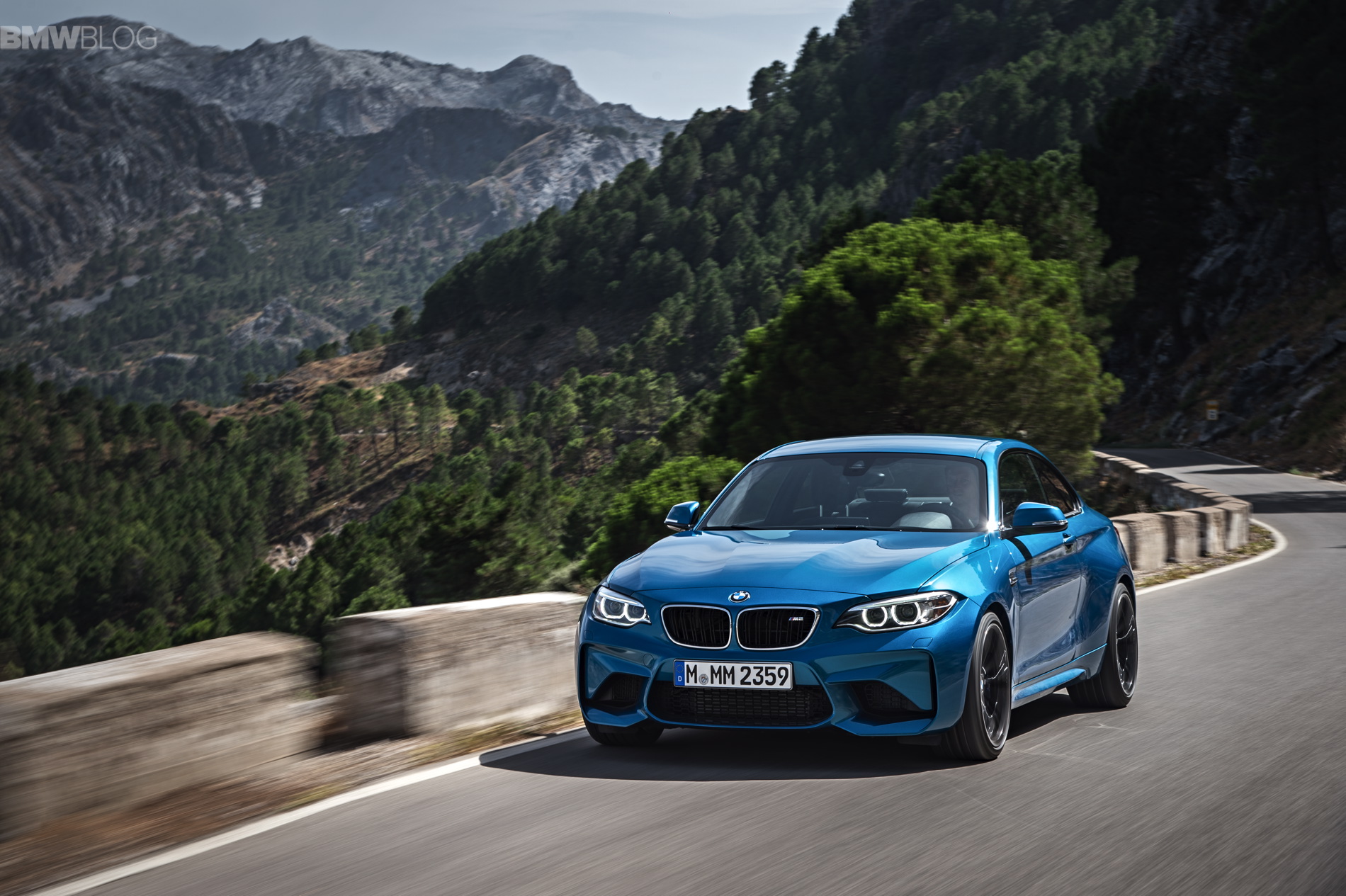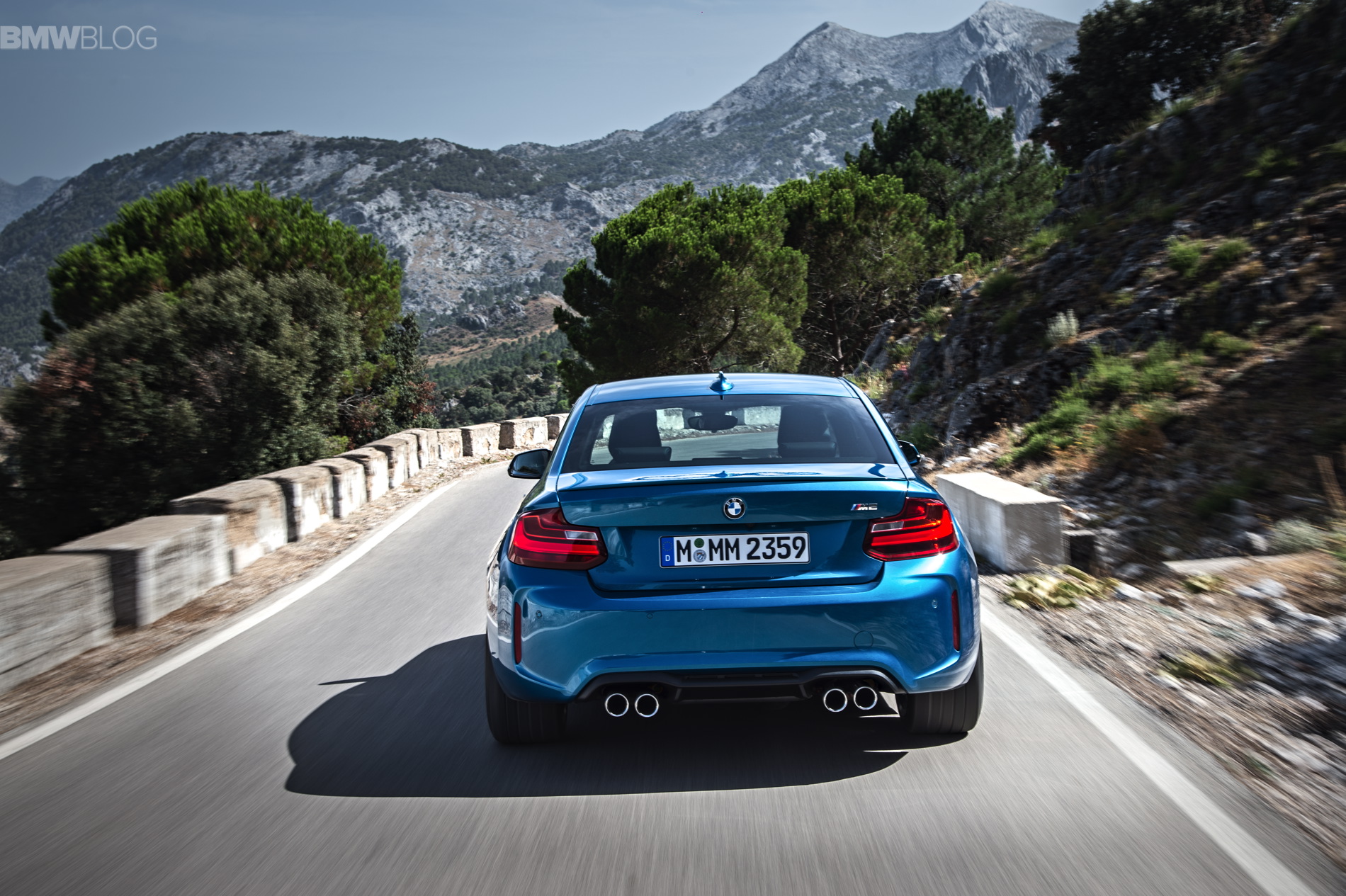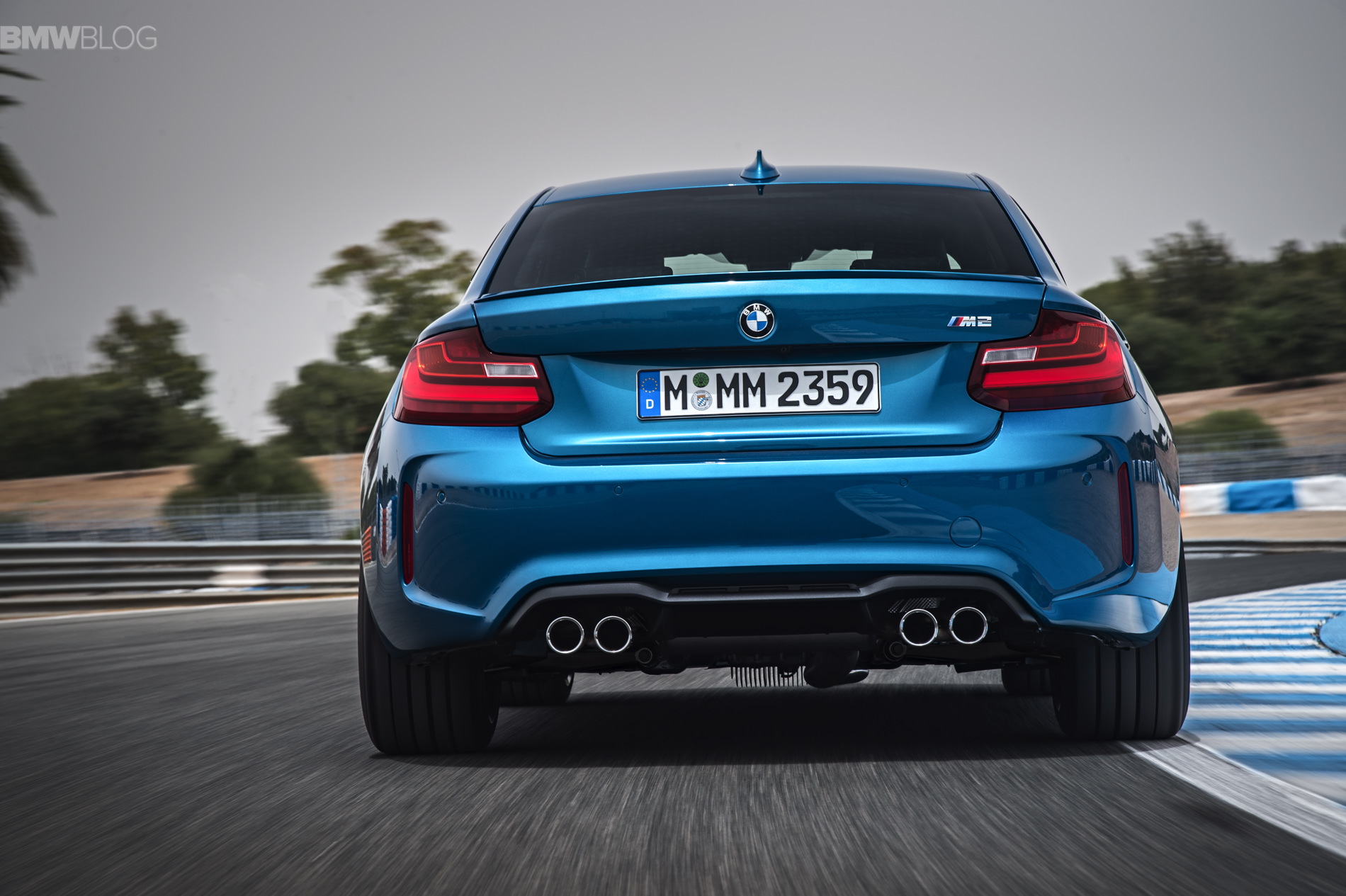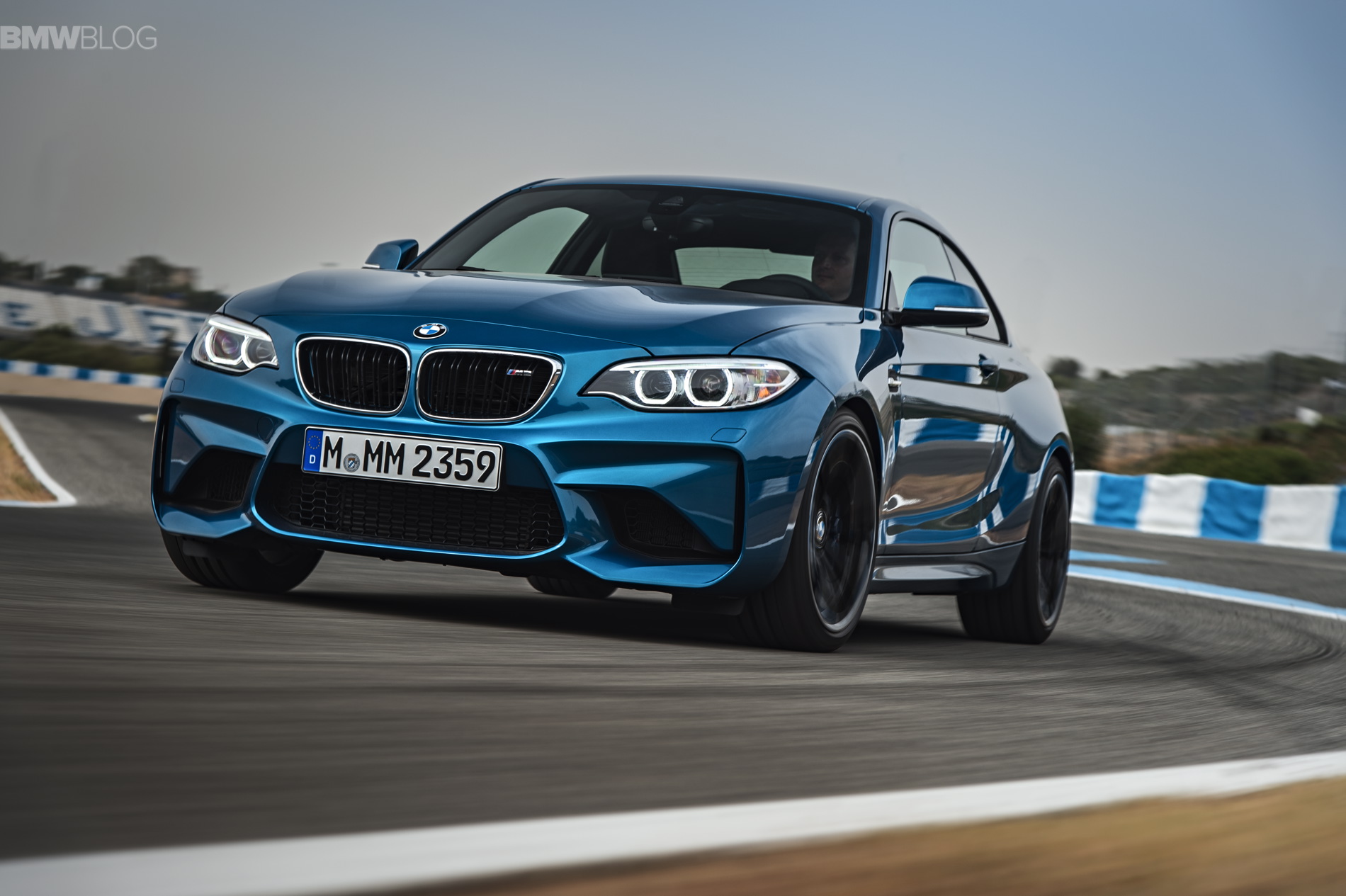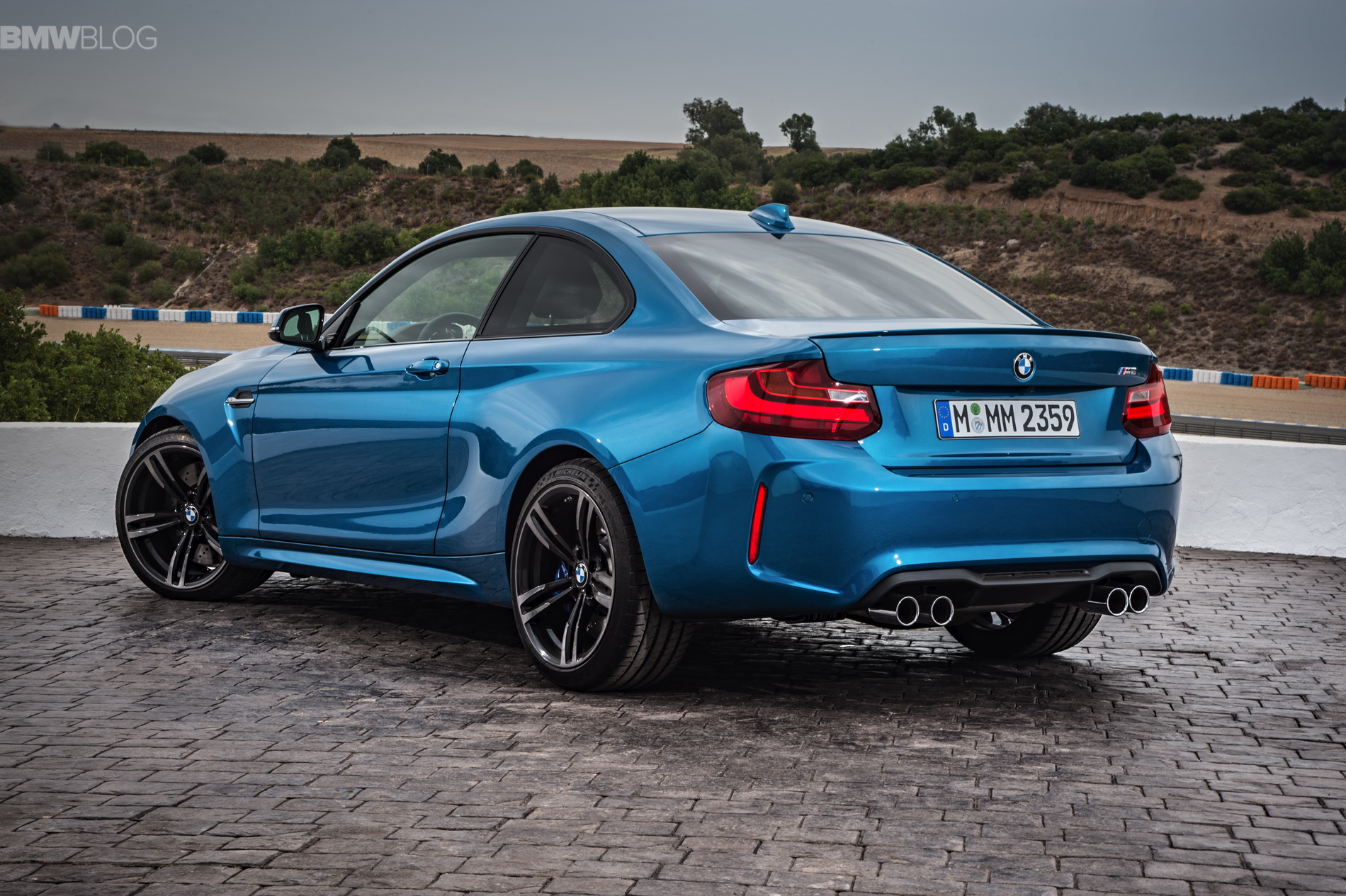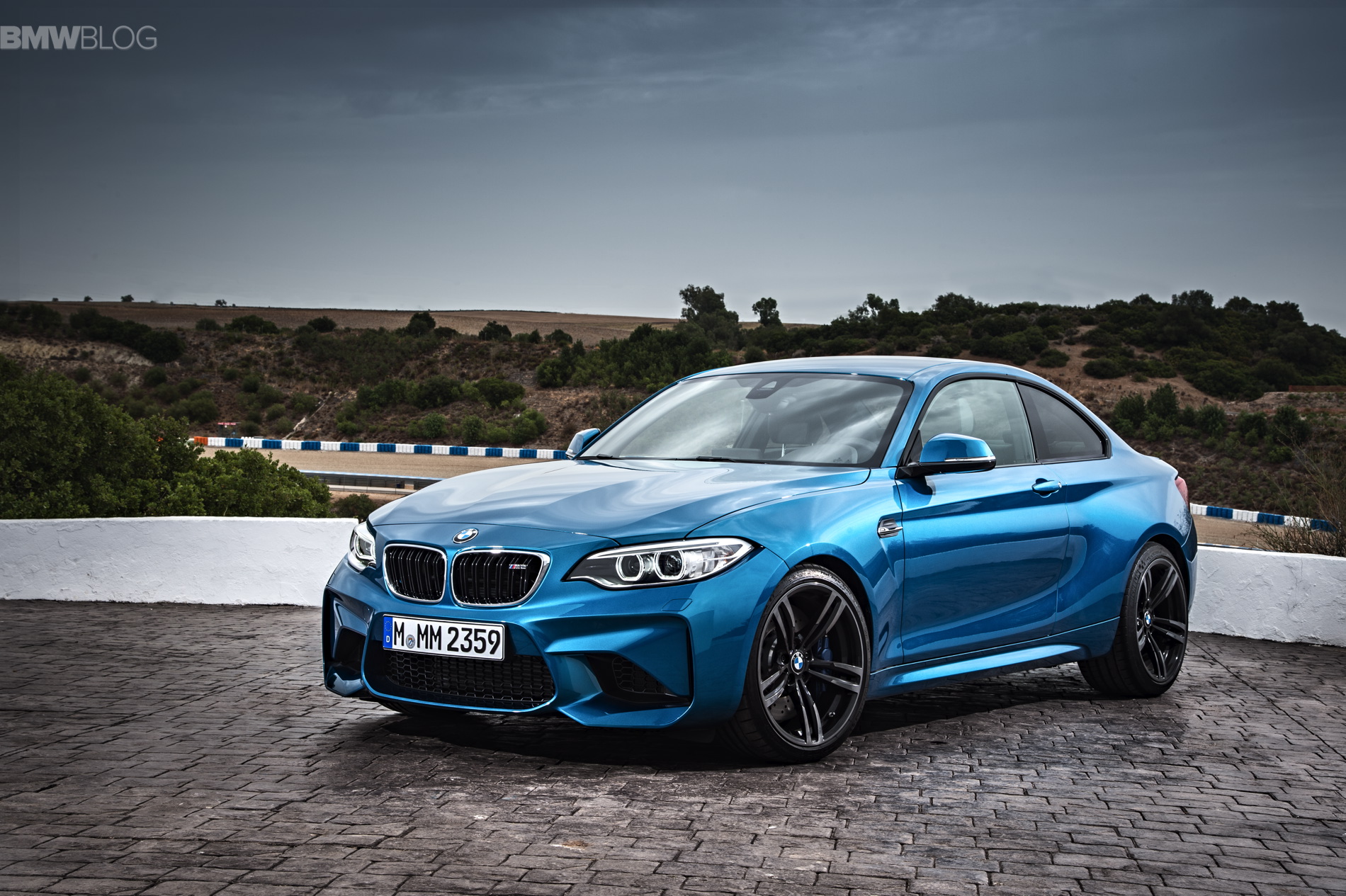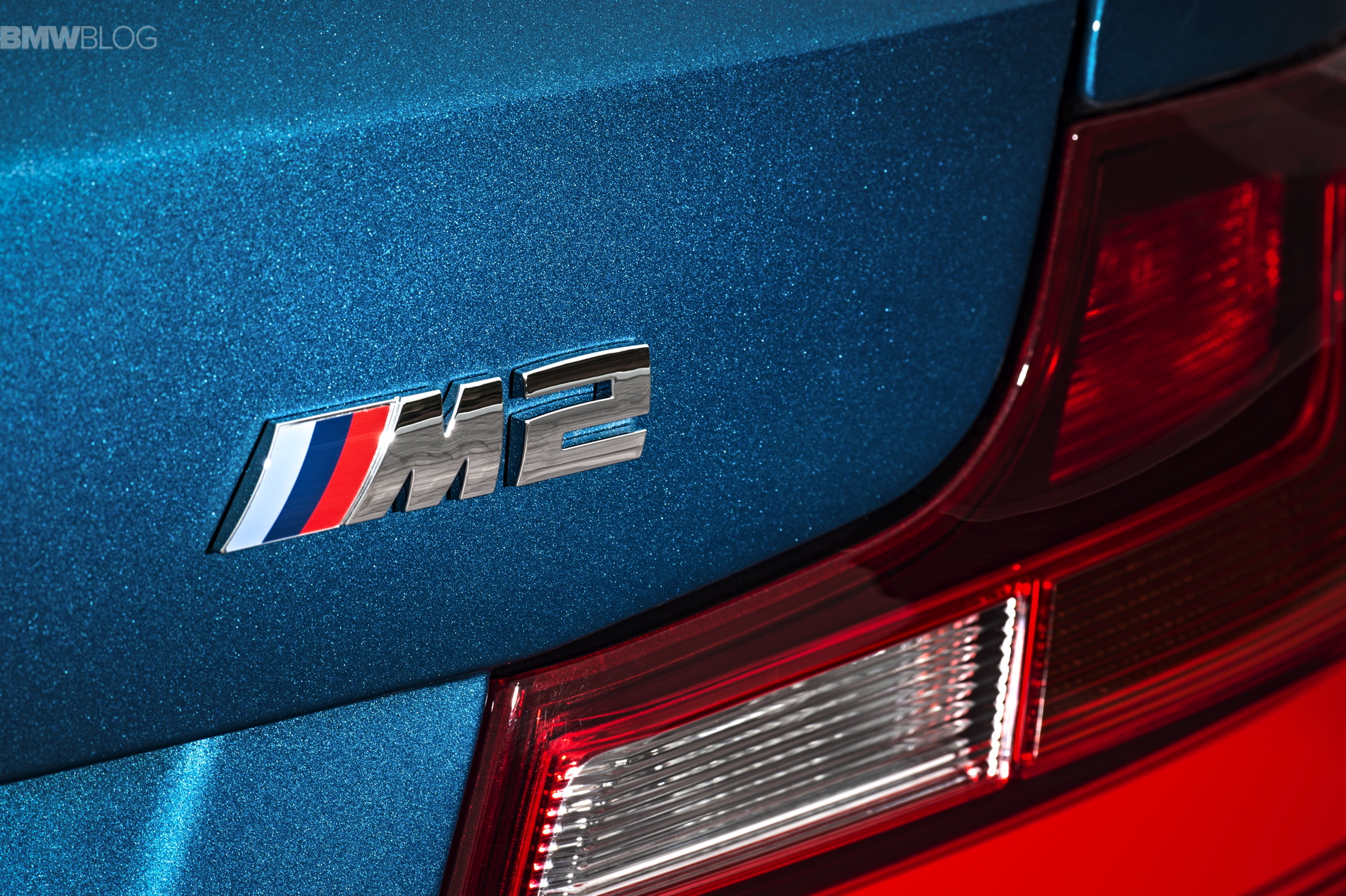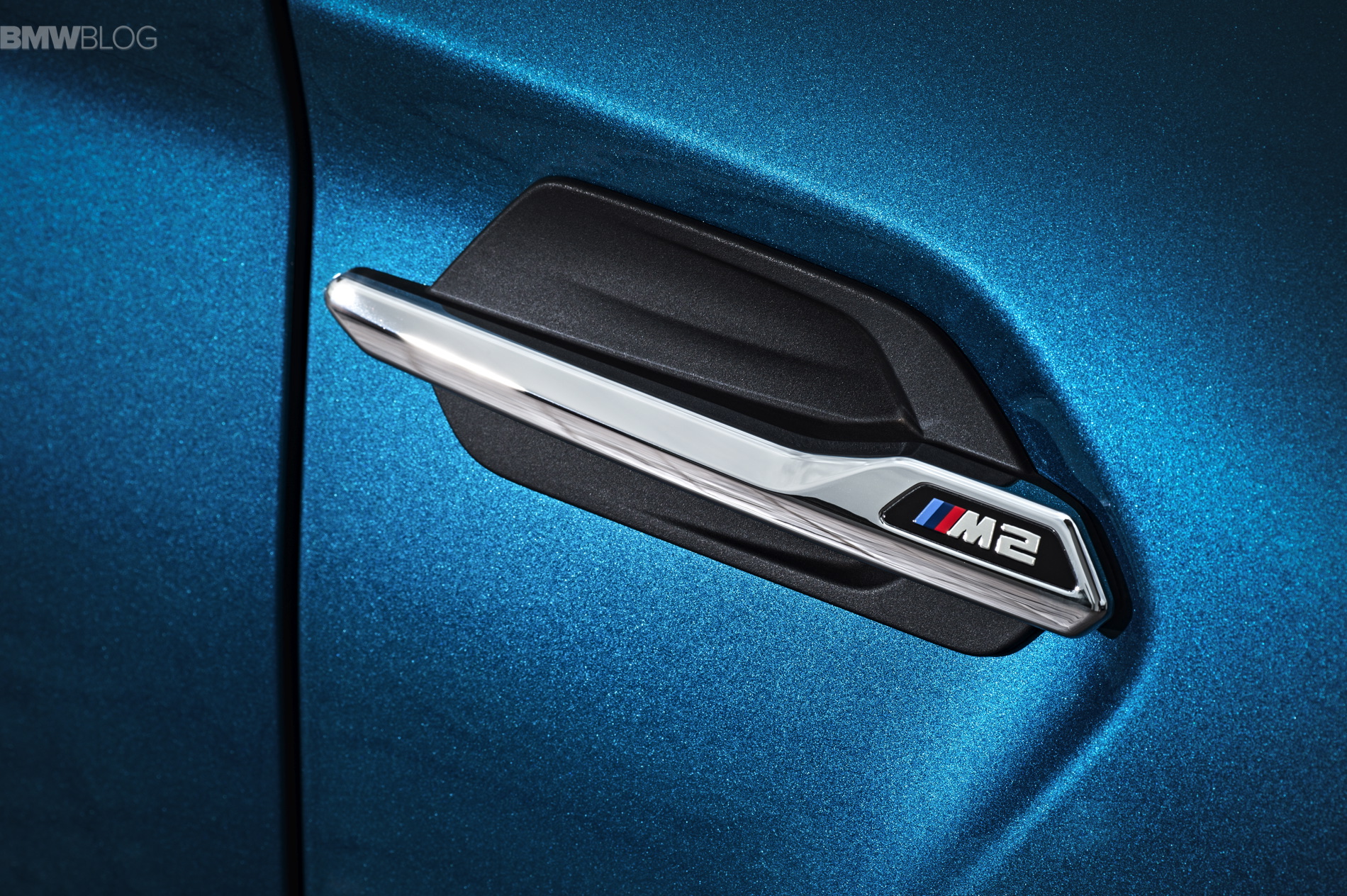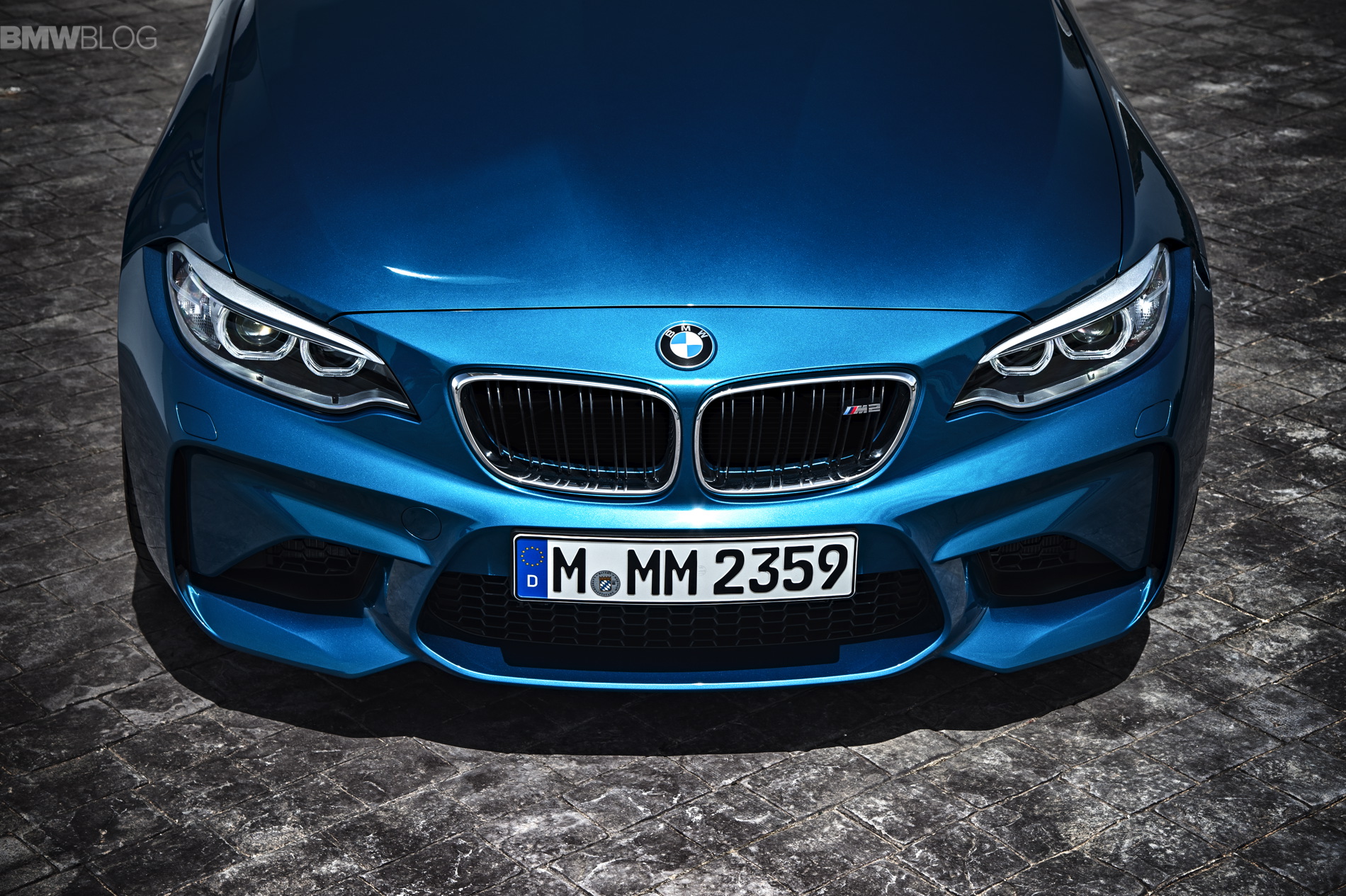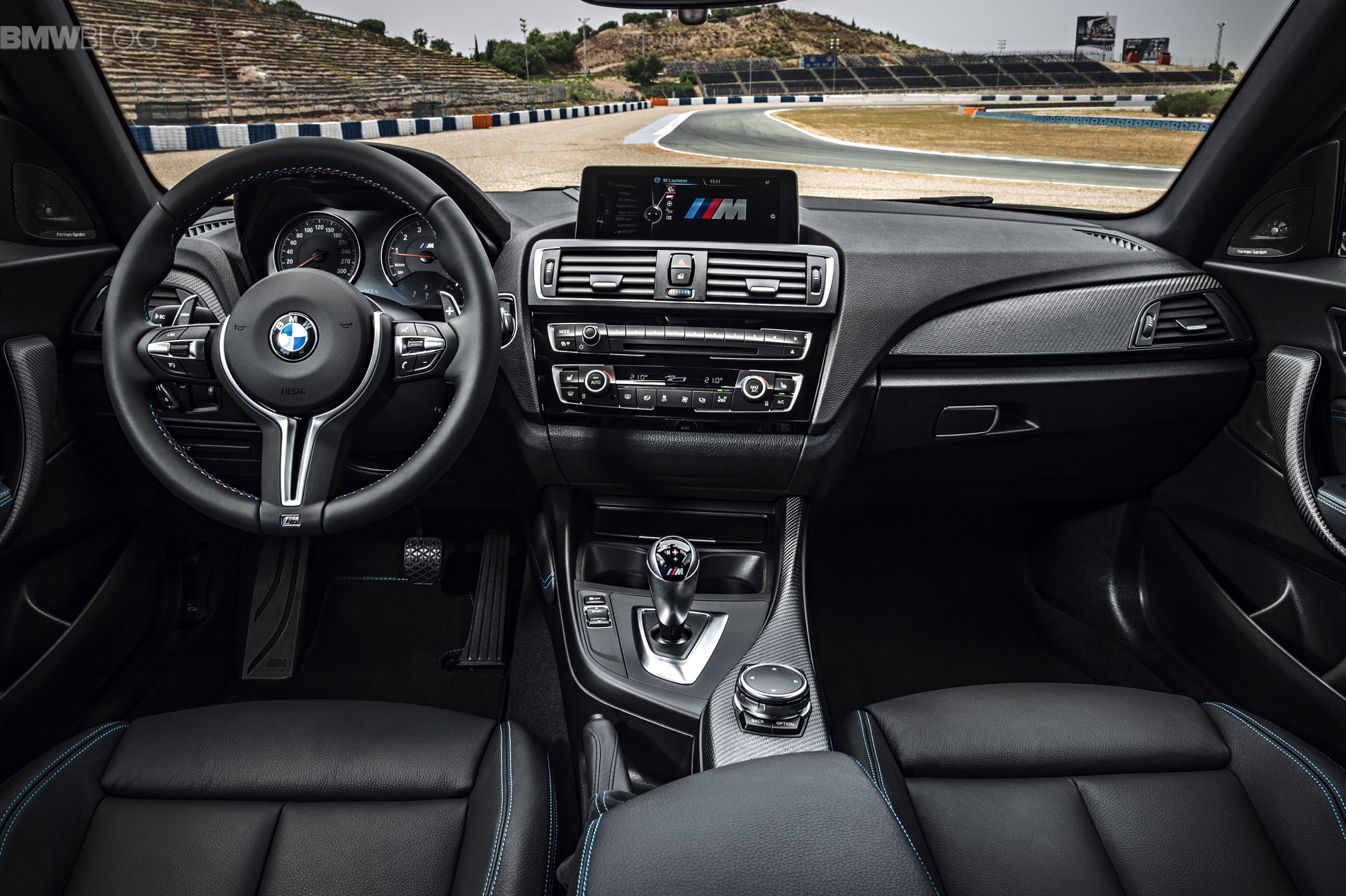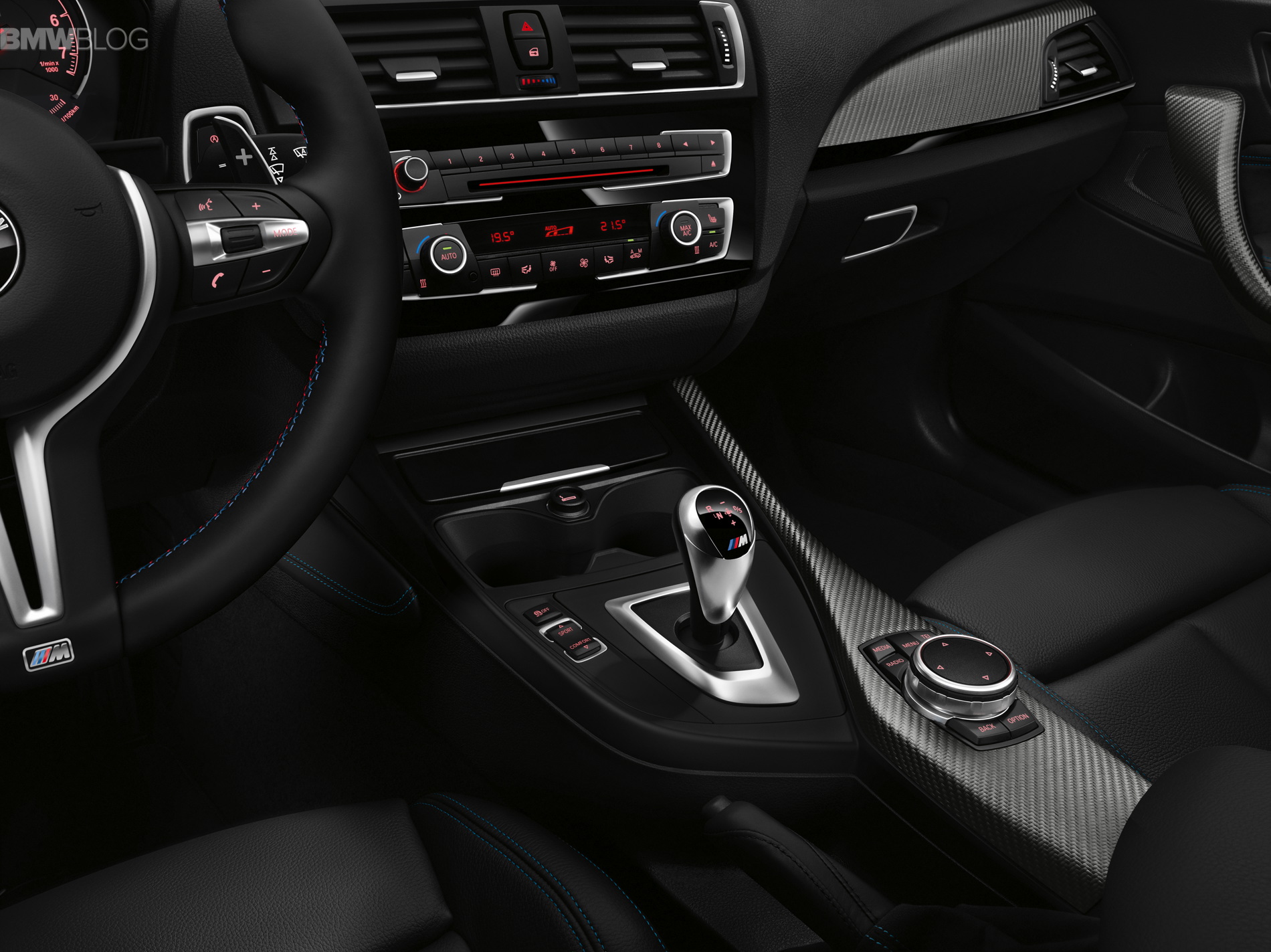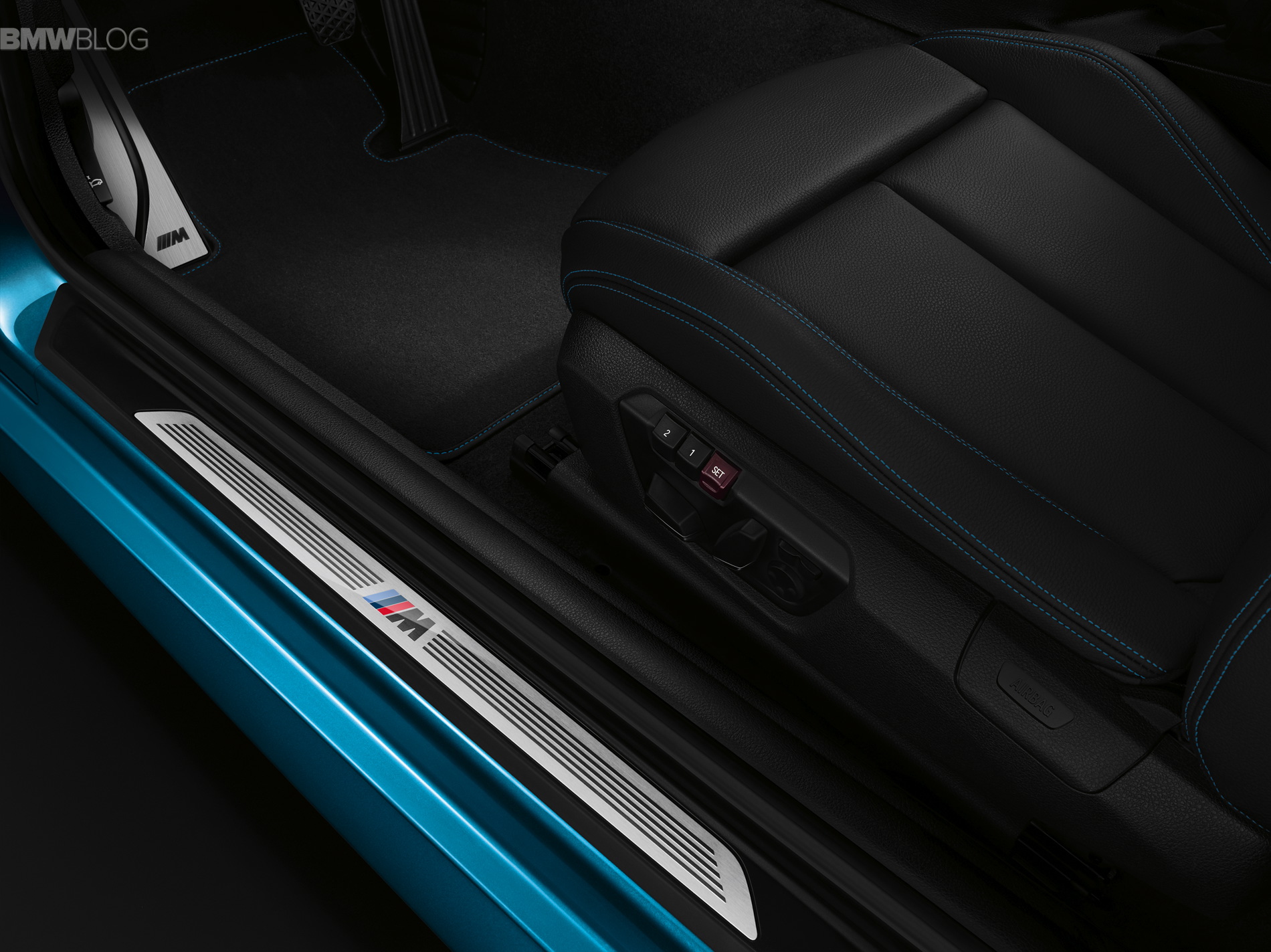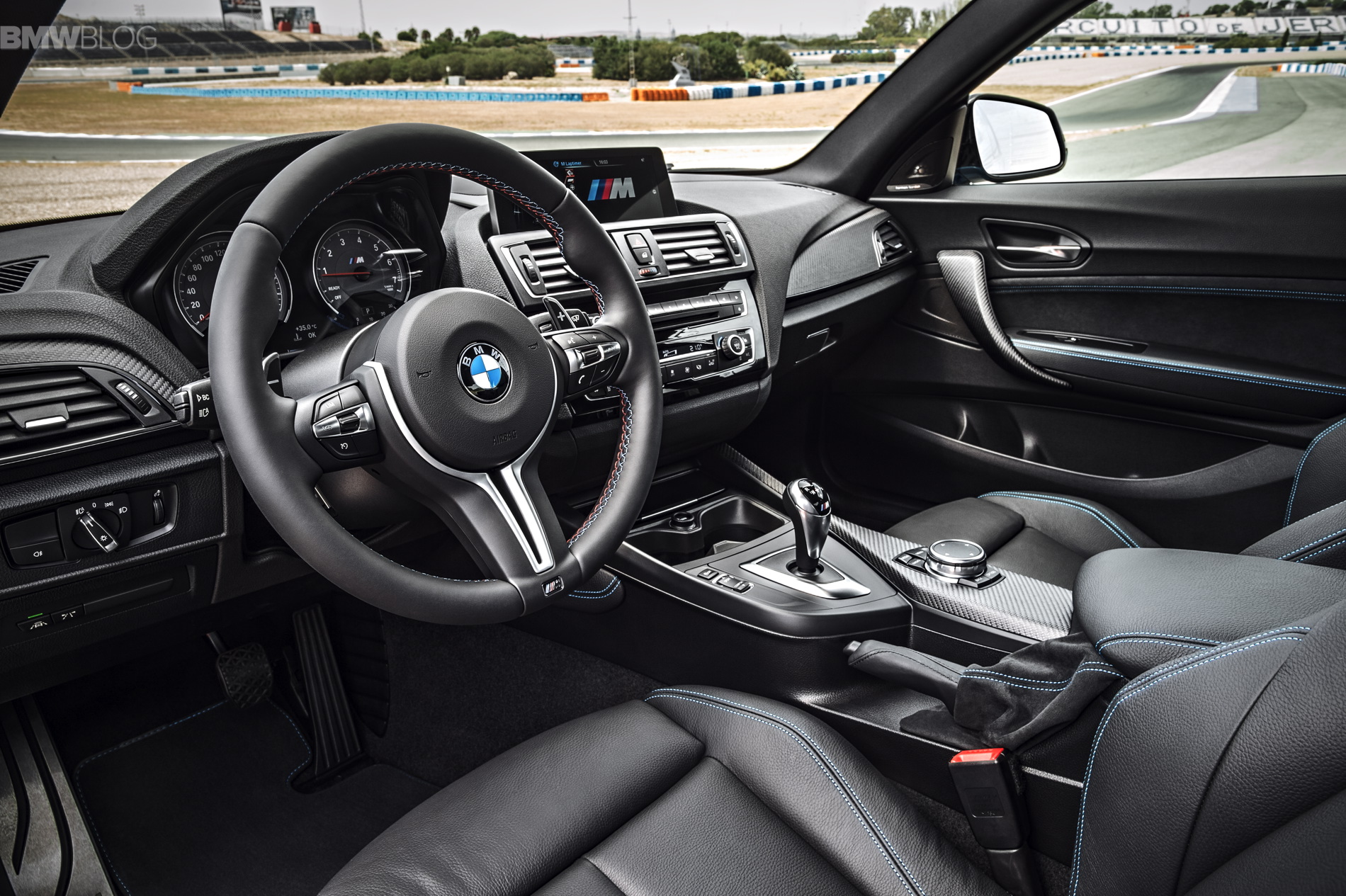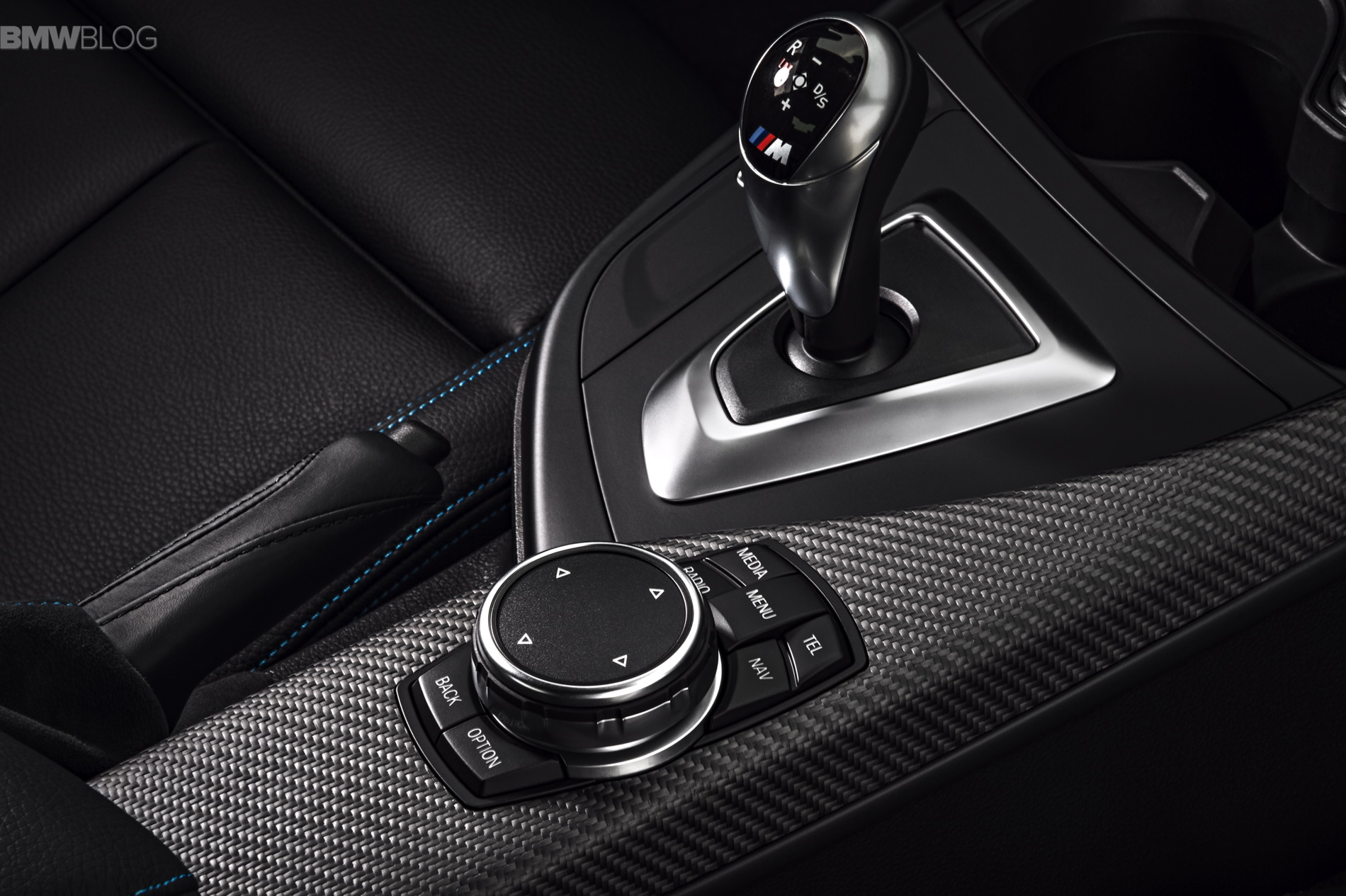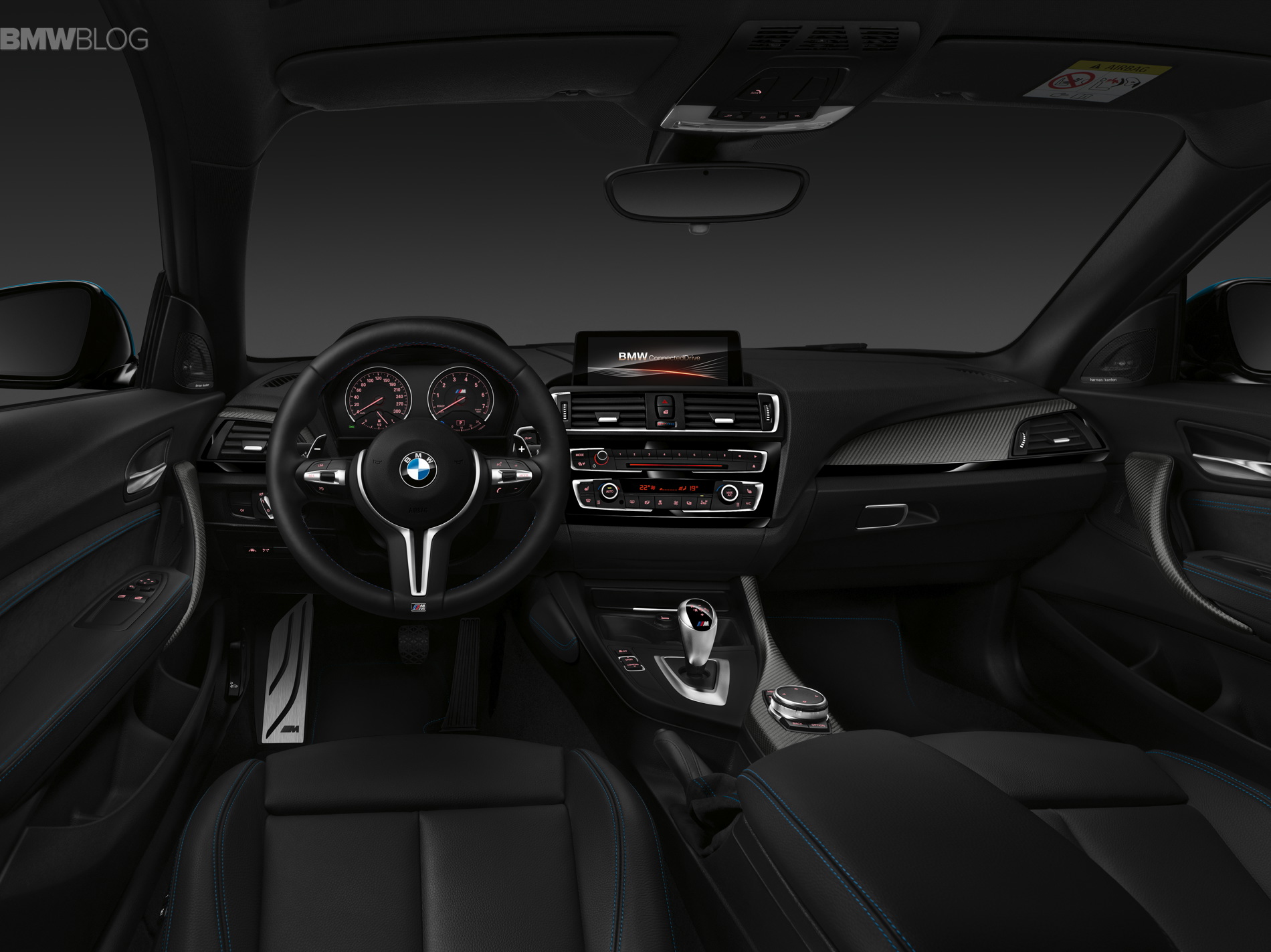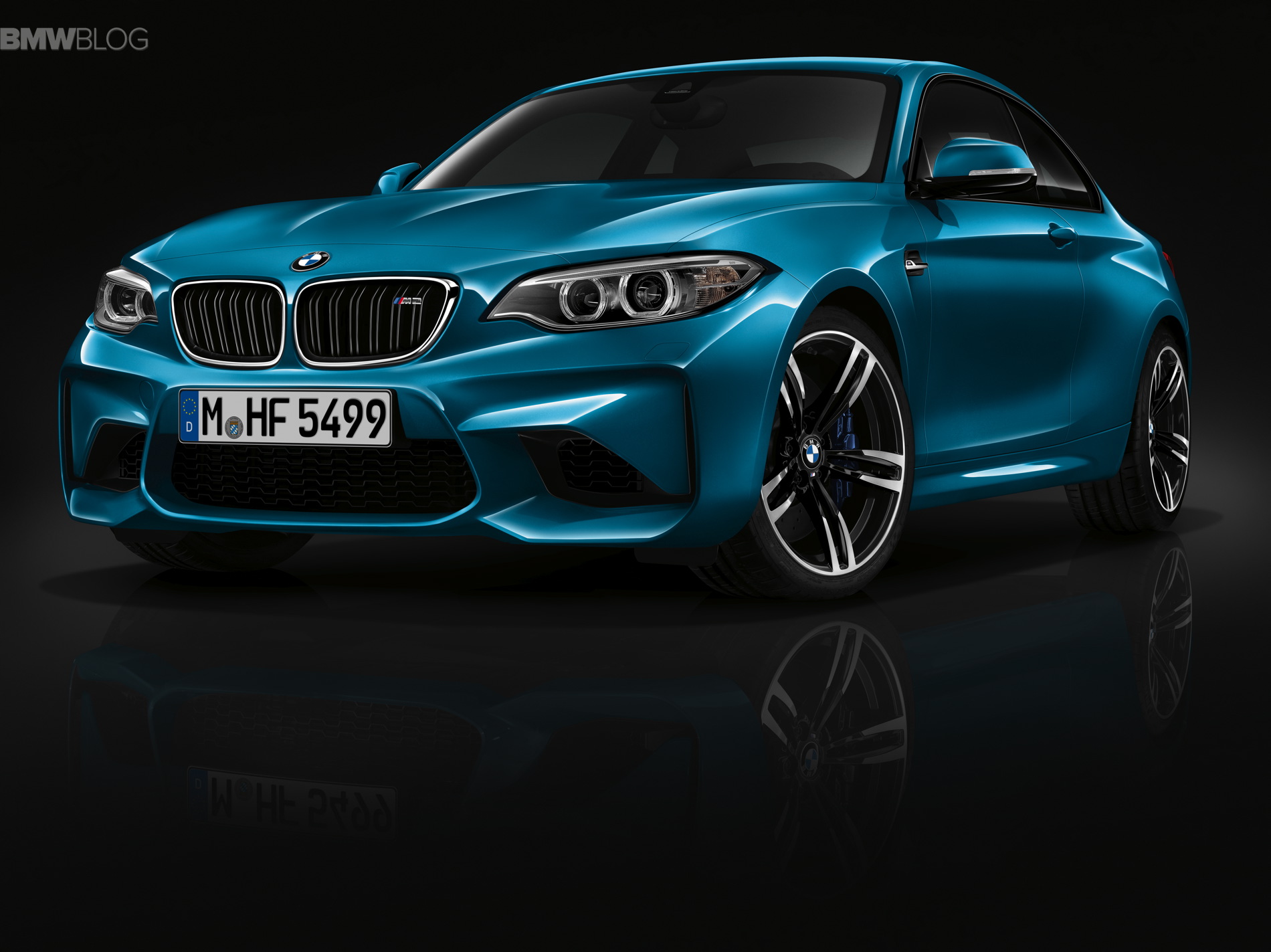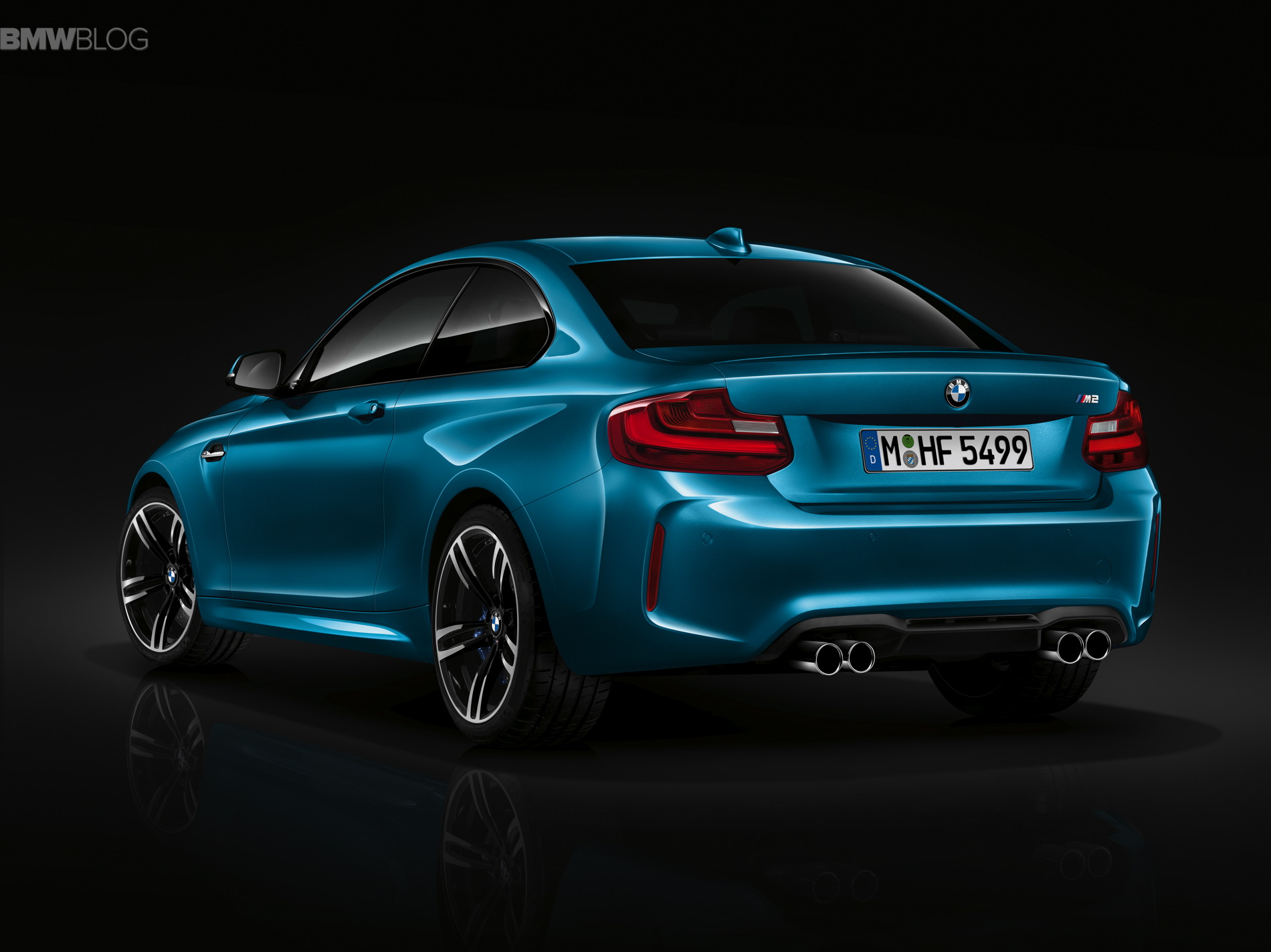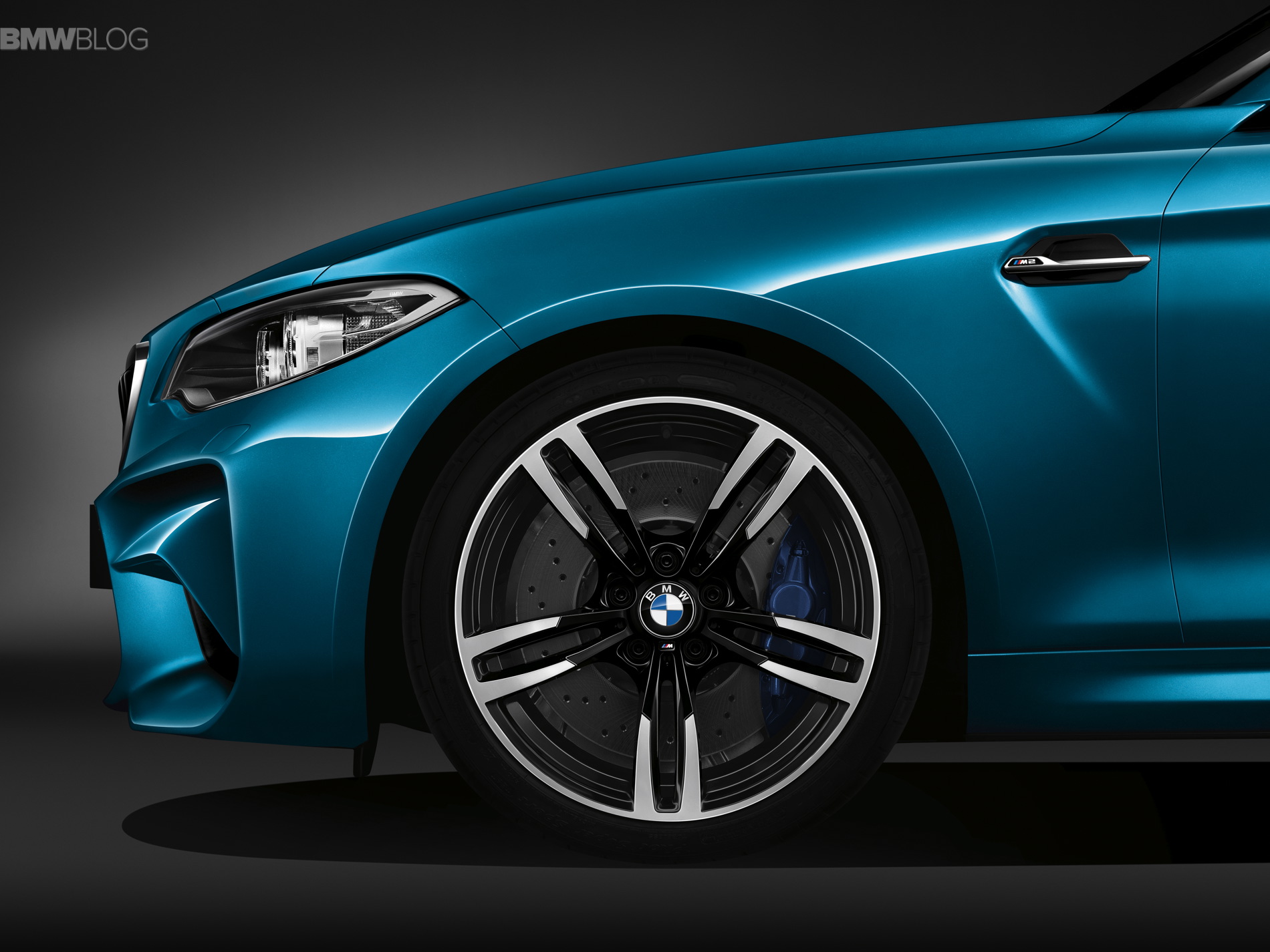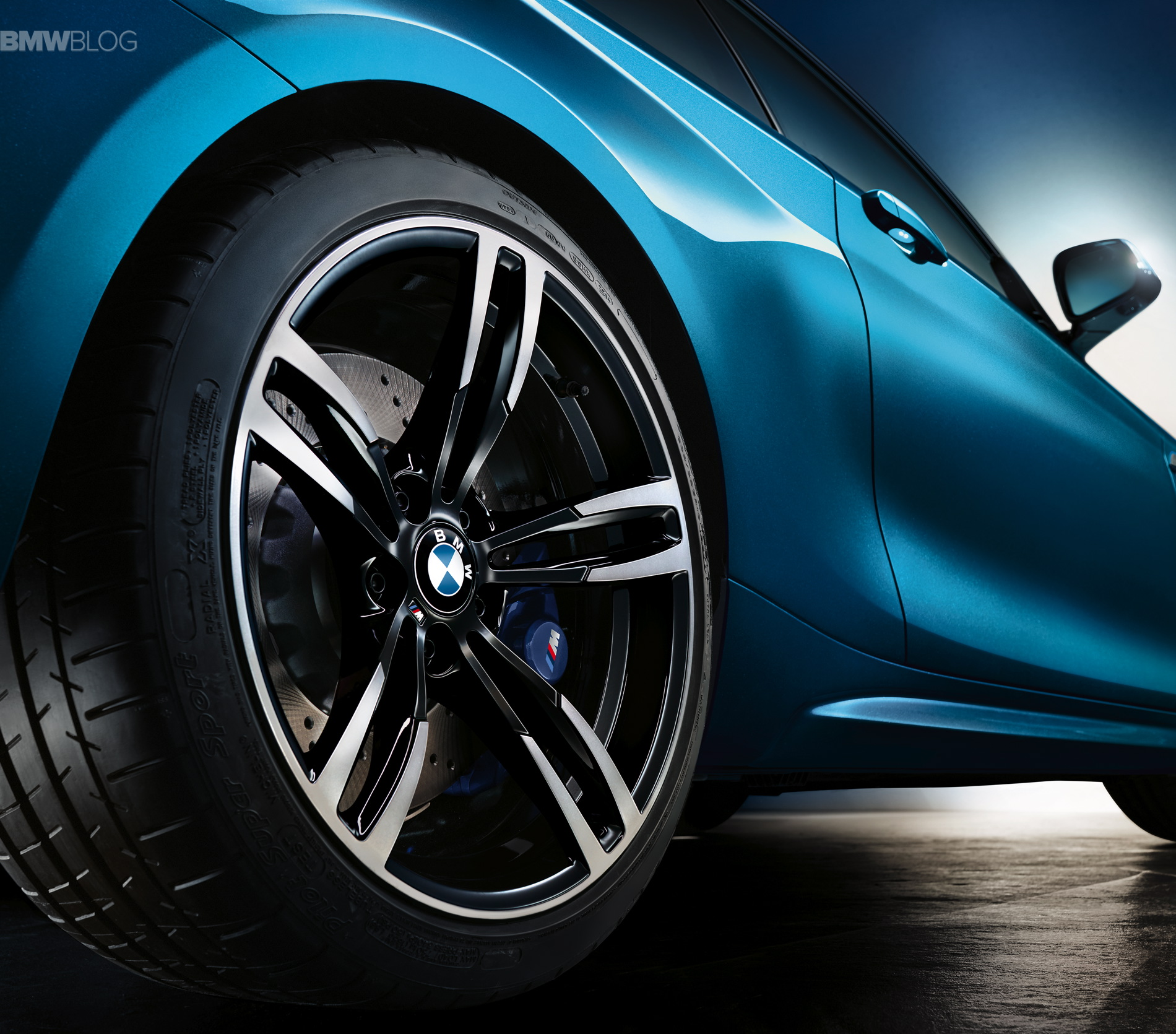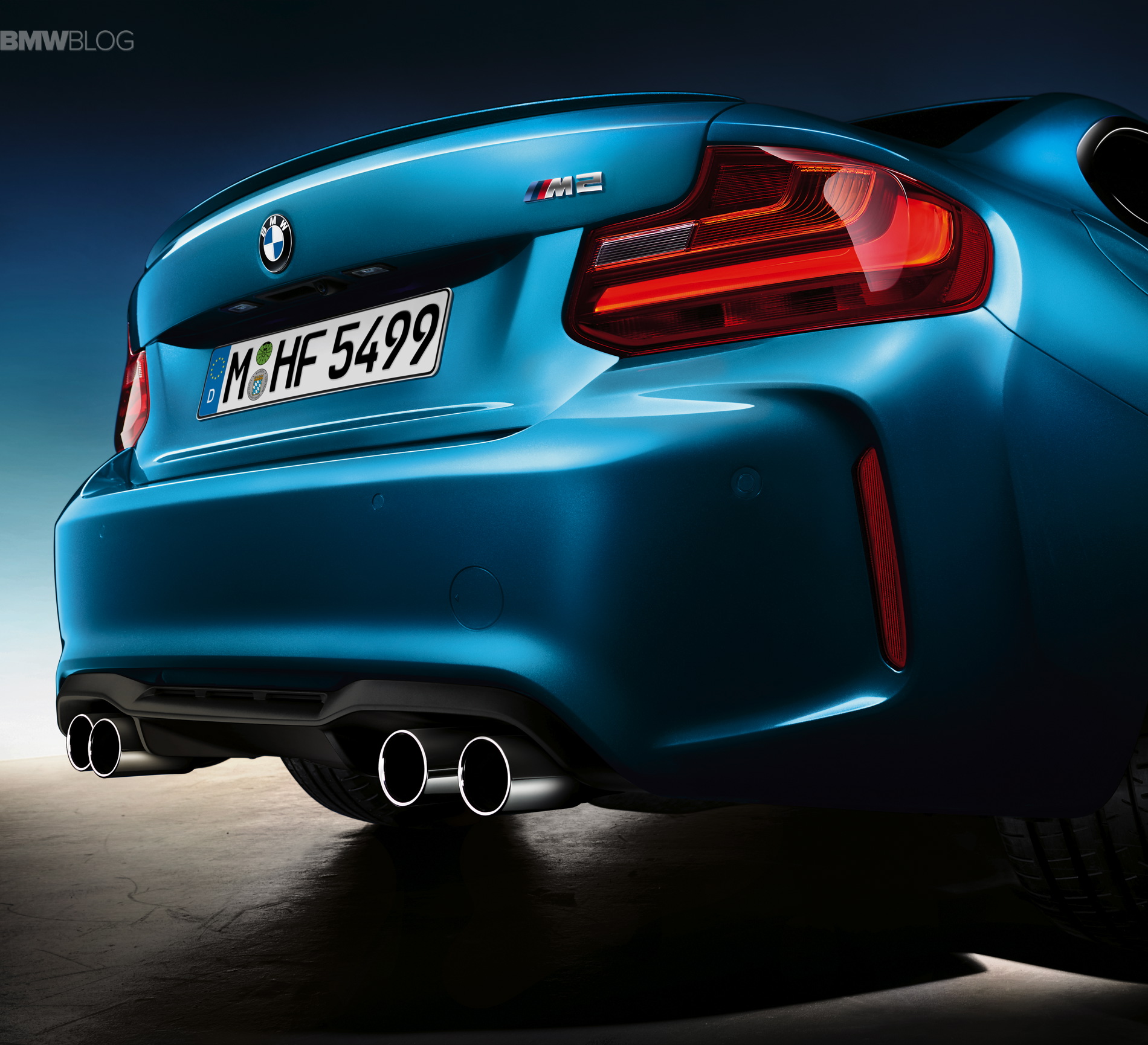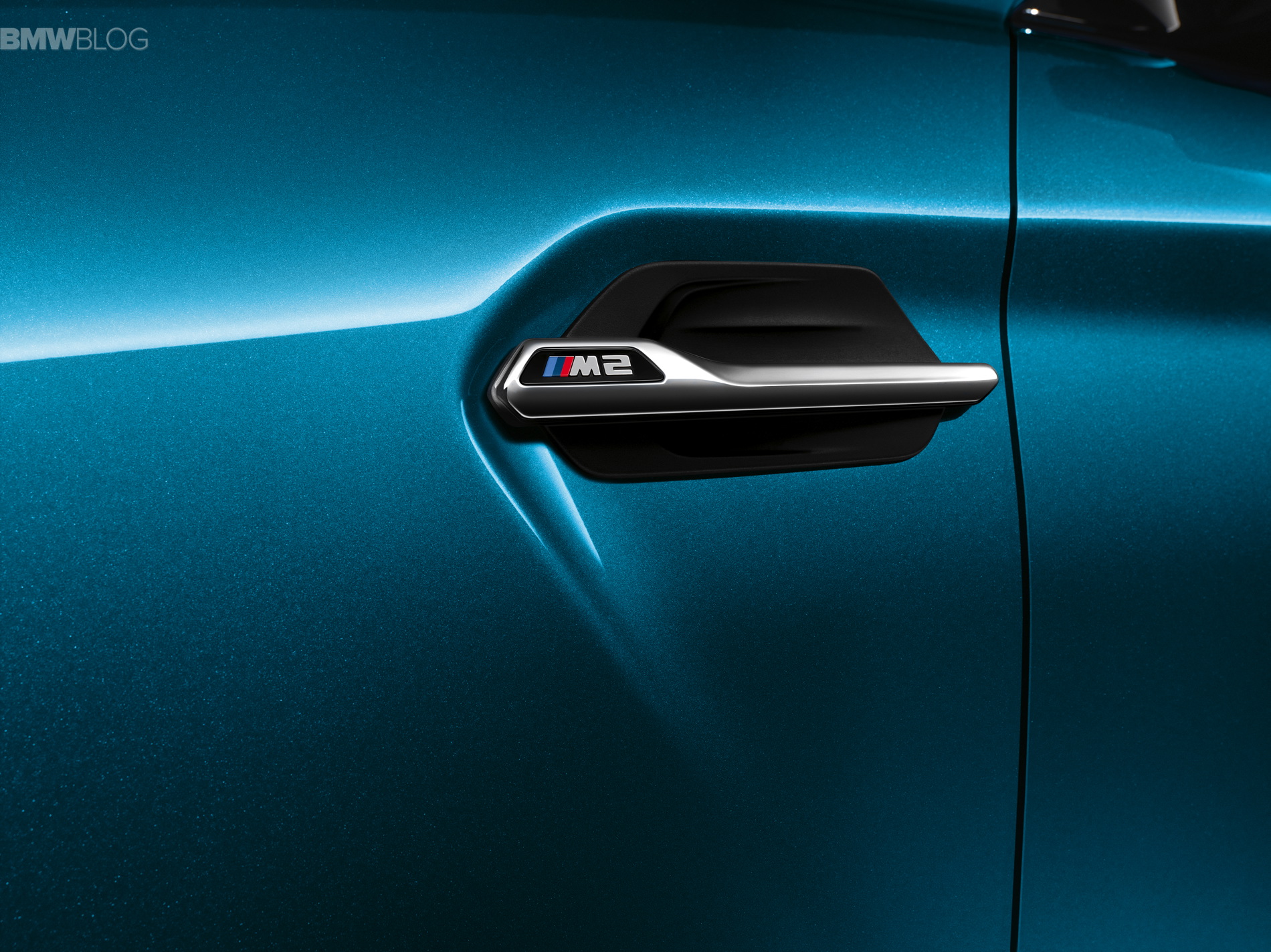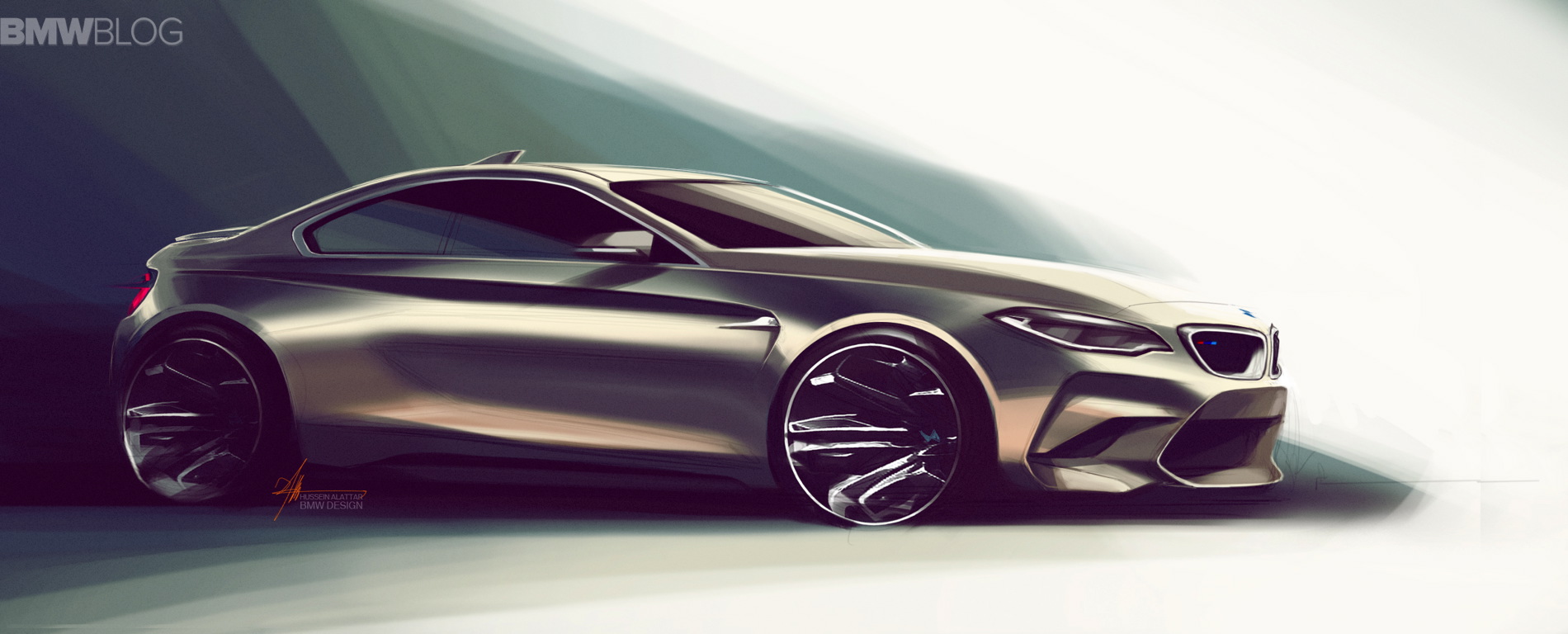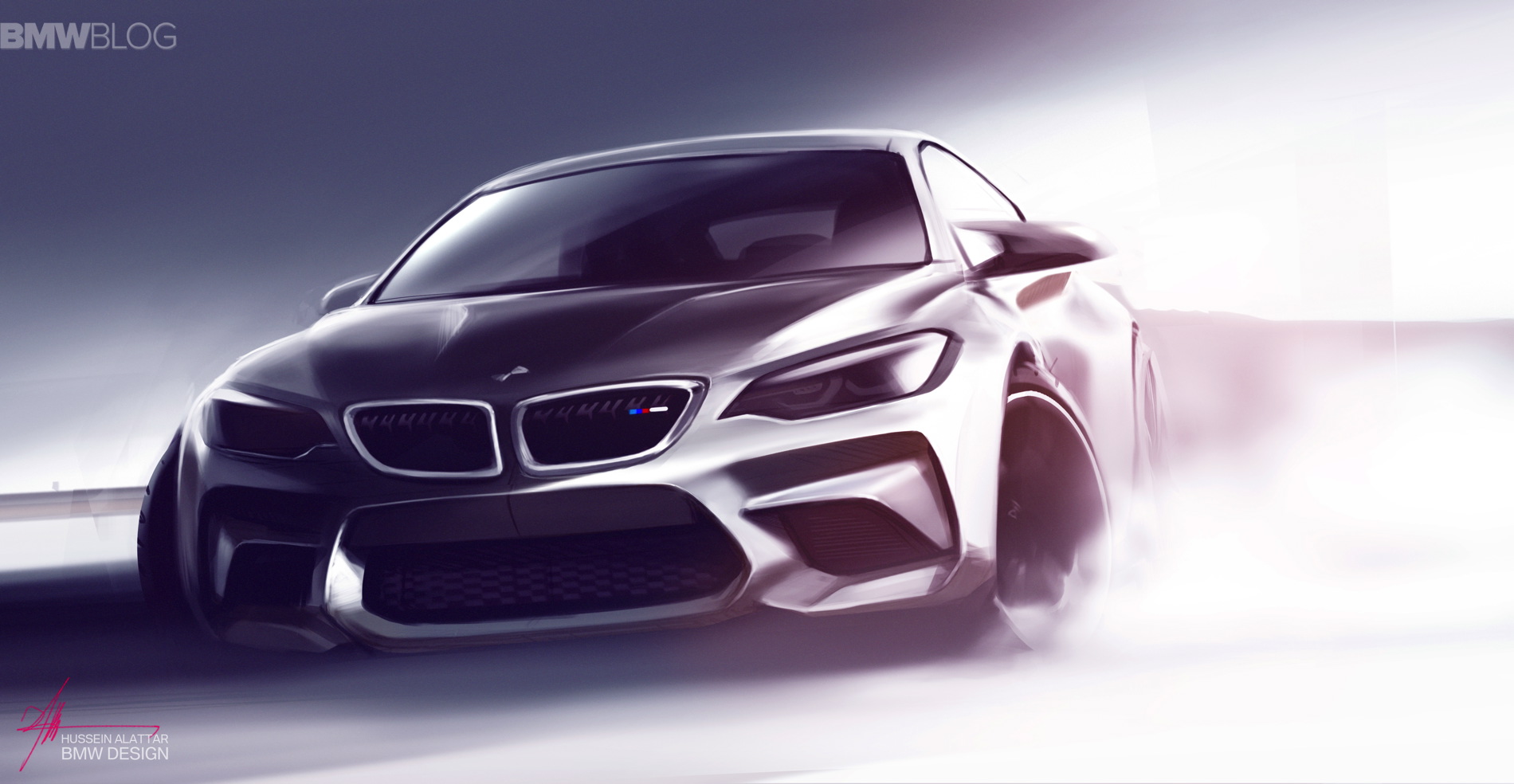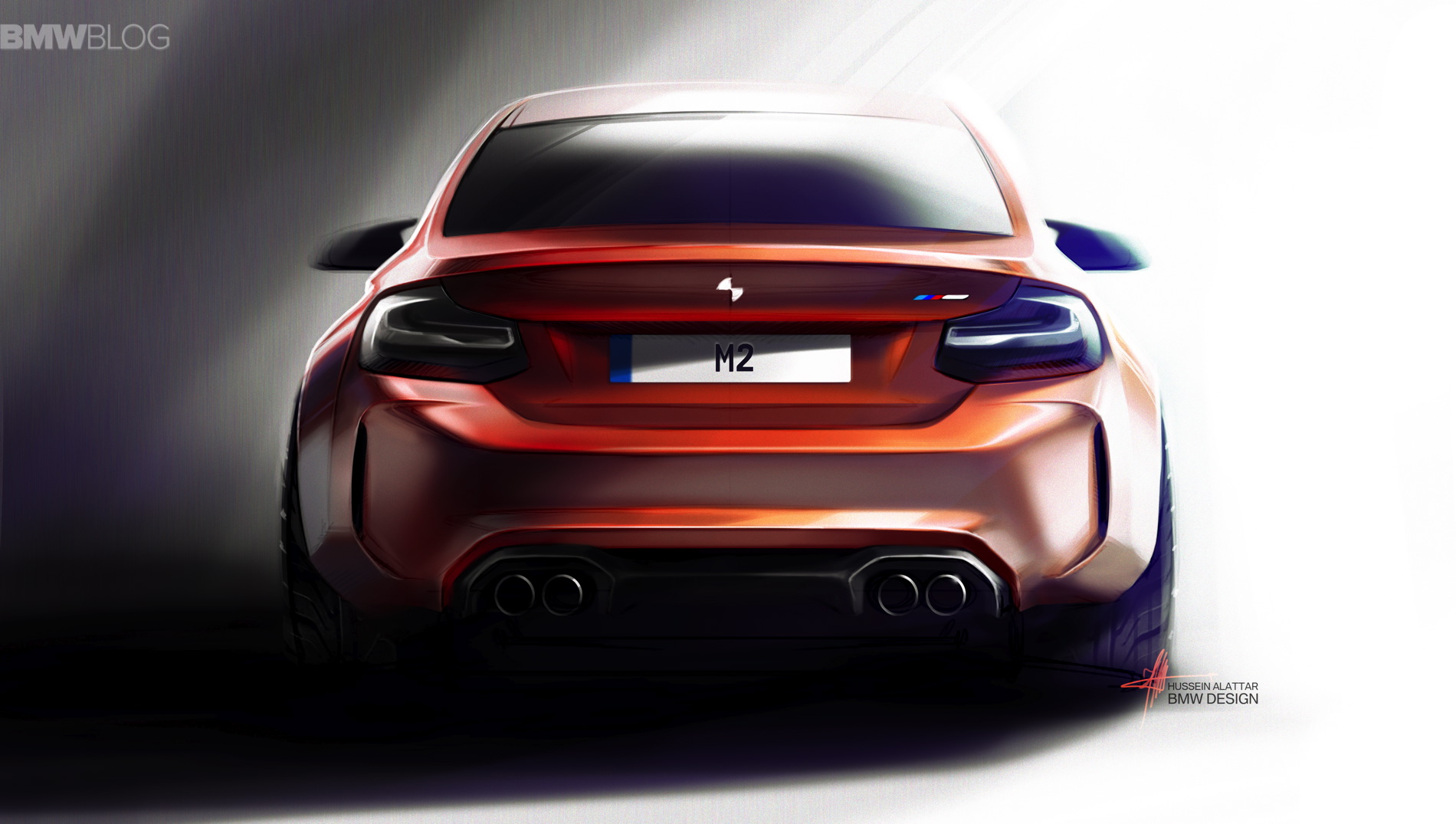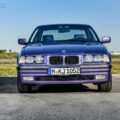After months of spy photos and rumors, the new BMW M2 makes its world premiere today.
When the BMW M235i debuted, it was rejoiced as sort of savior for BMW, as it seemed like BMW was getting back to its roots. A small, rear-wheel drive coupe with a straight-six engine and the option of a six-speed manual. It felt more BMW-y than every other BMW. But it was never a proper M car, it never had the magic that M3s of yore had.
Well, that’s about to change, as BMW has now created a proper M version, the M2.
CHASSIS
BMW went through great lengths to lighten the chassis of the M2 by using aluminum everywhere it could. The control arms, wheel carriers, axle subframes and stiffening plate of the double- joint spring-strut front axle weigh five kilograms less than would be the case with a conventional steel construction. Further weight savings are provided by the aluminum suspension struts and tubular anti-roll bar. BMW also intended to create unparalleled torsional rigidity and chassis stiffness so play-free ball joints are used to transmit transverse forces. The stiffening plate and additional bolted connection between the axle subframe and the body sills, which increases the stiffness of the front-end structure, also has a positive influence here. The longitudinal forces passing through the suspension are transmitted into the torque struts directly via special elastomer bearings, and this delivers the desired rolling comfort at the same time.
All the control arms and wheel carriers of the new BMW M2’s five-link rear axle are made from forged aluminum, which reduces the unsprung masses of the wheel-locating components by around three kilograms compared to a steel construction. This improves kinematics to give the M2 fantastic precision and dynamics. The wheels and tires will also be bespoke to the BMW M2, giving it the perfect setup for optimal traction.
Compared to the M235i Coupe, the M2 is between 40 t0 50 kilograms lighter (approx. 100 lbs) – depending on the configuration. The weight, unladen to DIN/EU is 1495 kg/1570 kg (3296 lbs / 3461 lbs) for the manual transmission and 1520 kg /1595 kg (3351 lbs / 3515 lbs) for the 7-speed DCT. The US Curb Weight for the M2 is listed at 3,450 lbs for the manual model and 3,505 lbs for the DCT.
POWERTRAIN
The M2 has gone back to basics, but has added a modern twist. It uses a brand-new six-cylinder in-line engine, with M TwinPower Turbo technology and three-liter displacement, develops 272 kW/370 hp with peak torque of 465 Nm / 343 lb-ft. (Combined fuel consumption, with six-speed manual gearbox: 8.5 l/100 km [33.2 mpg imp]; CO2 emissions combined: 199 g/km; with optional M Double Clutch transmission [M DCT]: 7.9 l/100 km [35.8 mpg imp]; CO2 emissions combined: 185 g/km).
Peak torque of 465 Nm (343 lb-ft) can be increased to as much as 500 Nm (369 lb-ft) in short bursts under overboost.
All of that tech and power allows the M2, with the optional M Double Clutch Transmission (M DCT) in place and Launch Control activated, to sprint from rest to 100 km/h (62 mph) in 4.3 seconds (4.5 s with the six-speed manual gearbox). The top speed of the new BMW M2 is electronically limited to 250 km/h (155 mph). If the M Driver’s Package – which includes a BMW Driving Experience voucher for a track training course – is specified, this cut-off point doesn’t arrive until 270 km/h (168 mph).
The transmissions are a bit part of the BMW M2’s performance. The new BMW M2 Coupe comes as standard with a new compact and lightweight six-speed manual gearbox. A new type of carbon-fiber friction lining enhances shift comfort. Dry-sump lubrication prevents any sloshing of the transmission oil and ensures all components benefit from an efficient supply of oil. It also blips the throttle on downshifts and lowers the engine’s revs on upshifts, makes gear changes even smoother and lends the car additional stability during hard driving on the track.
But the latest-gen of the seven-speed DCT helps even more so. The DCT detects which gear the driver will choose next on the basis of the engine’s revs, the accelerator position, the level of acceleration and the driving mode, and engages it before the driver has actually moved the shift paddle. As a result, the clutches now only need to open or close for the gear-change process to be completed. The change of gear is therefore executed in fractions of a second and enhances the dynamic driving experience in a very palpable way.
BMW even included a Smokey Burnout function, which invites the driver to indulge in a degree of rear wheel spin while the car is moving at low speeds.
BMW has also worked hard in making sure oil can reach all major components, even during heavy lateral forces, BMW an additional oil sump cover helps to limit the movement of oil under powerful acceleration. At the same time, an extra oil suction pump sends the oil back to the rear part of the oil sump when the driver brakes heavily. A special suction system, furthermore, is employed for the oil supply to the turbocharger under higher vehicle acceleration. This measure ensures that the oil supply to the engine remains secure at all times, both in normal everyday driving and when lateral dynamics reach the upper end of the scale.
ACTIVE M DIFFERENTIAL
The Active M Differential in the new BMW is an electronically controlled multi-plate limited-slip differential. The M2’s LSD is proactively controlled with extremely high precision and speed – The locking effect can be varied between 0 and 100 per cent according to the driving situation. Sensors including those of the DSC (Dynamic Stability Control) system determine the car’s steering angle, accelerator position, brake pressure, engine torque, wheel speed and yaw rate. The control unit uses this analysis of the driving situation to detect the threat of traction loss on one side of the car and calculates the required locking effect, which is engaged by an electric motor. Full locking power of 2,500 Nm (1,843 lb-ft) is available within 150 ms. This allows the system to prevent a wheel from spinning in extreme conditions on slippery road surfaces or when the two rear wheels are experiencing significant differences in friction coefficient.
EXHAUST SYSTEM
BMW seem to have learned something from the M235i and the new M2’s exhaust comes with special flap system. The traditional twin dual tailpipes are still present – a clear sign this is an M car – with electrically controlled flap delivering the distinctive BMW M engine soundtrack across the entire rev range without pushing volume levels to their stipulated limits. In addition, drivers can use the Driving Experience Control switch to select a driving mode and a preconfigured sound to go with it.
DESIGN
The new BMW M2 is also a looker. This could be BMW’s best looking car when it debuts next year. The M2 looks muscular, but not overdone, aggressive but not flashy. It could also be the best proportioned M car since the E46 M3. The fenders flare out a bit, to give the M2 a more muscular stance, but they do so subtly without looking like a boy-racer. It’s not overdone, like some say the M3 is, it looks just right and could be BMW’s best looking car. BMW says the fenders were extended 55 mm at the front and 80 mm at the rear.
The design also incorporates so many BMW design cues from both its road cars and its Motorsport history. The three-dimensional design of the grille has a “shark nose” feel to it. The modern take on the BMW twin circular headlights (here in xenon form) underlines the car’s forward-surging look and establishes a close stylistic connection with the grille. This further sharpens the focus of the new BMW M2 on the road ahead. The large front apron with trapezoidal blades and the Air Curtains in the outer air intakes recall the type of protruding spoilers that have been a familiar sight in motor sport down the years. For the BMW M2 they were inspired in particular by the BMW 3.0 CSL touring car racer.
BMW even added a round gas door, a nice touch if you ask us.
The cabin is fitted with a host of BMW M-specific equipment details – Sports seats, in black Dakota leather with blue contrast stitching and an M logo in the backrests, an M footrest and knee pad on the center console and instruments with BMW M2-specific dials and needles. Familiar M equipment items in the new BMW M2 Coupe also include M logos on the rev counter, gearshift lever, door sill plates and M leather steering wheel with shift paddles. Other highlights of the interior are the new BMW M2 trim strip with surfacing in porous carbon fiber and Alcantara for the door cards and parking brake lever gaiter.
The new BMW M2 is available in four exterior paint finishes – Long Beach Blue metallic, Alpine White, Black Sapphire and Mineral Grey.
WHEELS
BMW M engineers decided to fit the new BMW M2 with aluminum wheels and mixed-size tires. The lightweight 19-inch forged wheels (front axle: 9J x 19, rear axle 10J x 19) substantially reduce rotating and unsprung masses. Together with the exclusive 19-inch Michelin Pilot Super Sport tires (front axle: 245/35 ZR 19, rear axle: 265/35 ZR 19), they ensure proper grip on the track and great comfort on the road.
BRAKES
M compound brakes are fitted as standard on the new BMW M2 and are made from grey- cast iron. The measure 380 mm in diameter front axle, 370 mm in diameter rear axle, while the brake disc hub is manufactured from aluminum, thus saving weight. They are also significantly lighter than conventional braking systems as they reduce unsprung and rotating masses, which means they play a major role in further enhancing the dynamic ability of the new BMW M2.
Overall, the BMW M2 looks to be the car that everyone hoped it would be; fast, light and good looking. We won’t know how it driver until later next year, but with its lighter chassis, powerful engine, grippy suspension and outstanding looks, the BMW M2 could be the proper BMW M2 that everyone’s been hoping for.
BMW will launch the M2 in Spring 2016 with pricing to follow in the next few months. In the U.S. the BMW M2’s MRSP is rumored to start at $51,000.
US Specs



